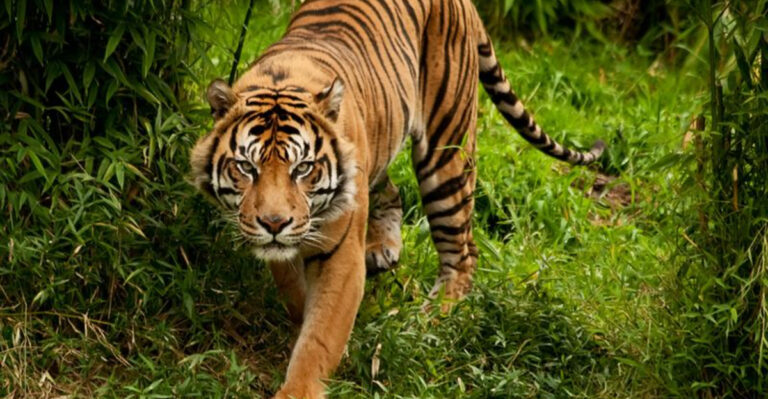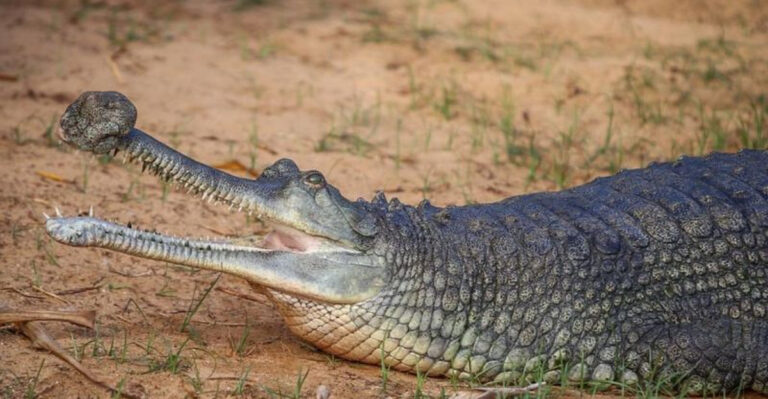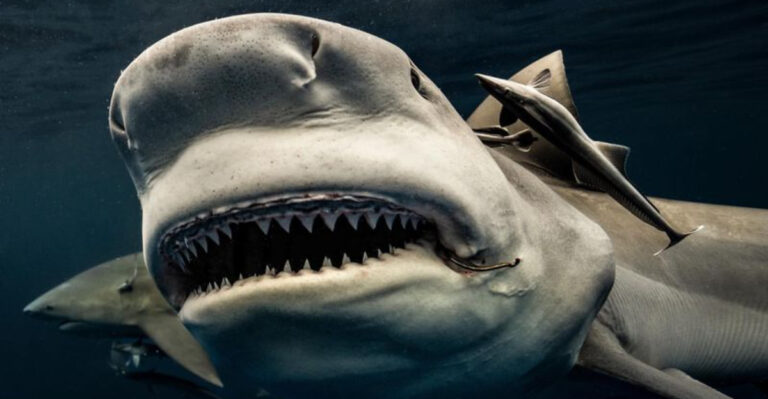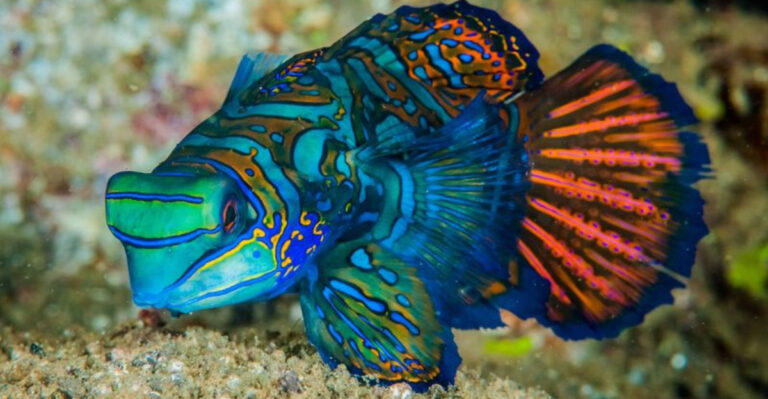37 Incredible Wild Cat Breeds From Around The World
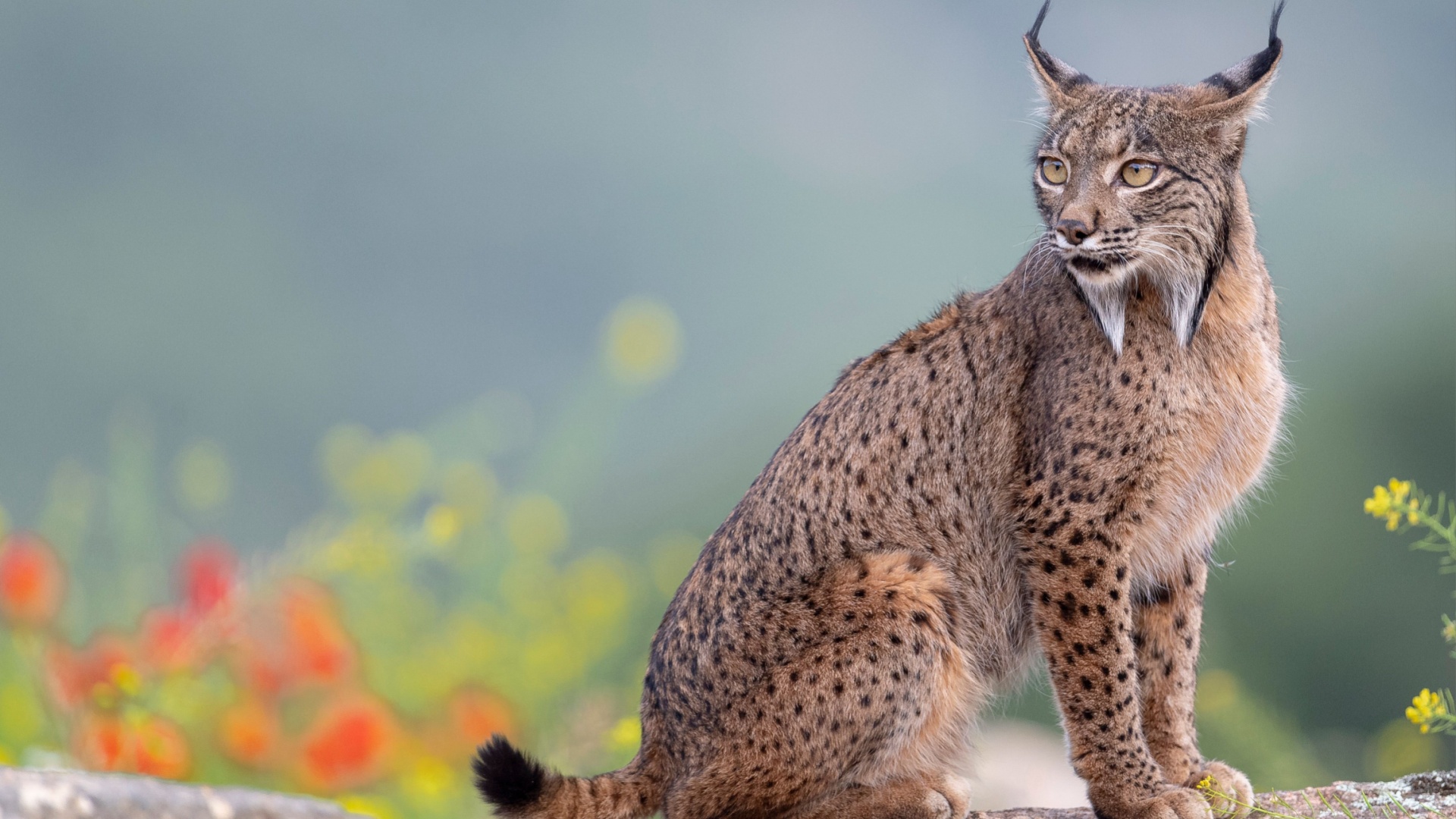
Welcome to the cat wildlife!
This article will cover some species of wild cats ever seen in the world. The beauty of the small Rusty-spotted cat from Sri Lanka, the African and Asiatic cat, and the massive Siberian tiger will leave you speechless.
We are all familiar with leopards, tigers, jaguars, and the king of the jungle – lions, but what about other wild cat breeds? If you are interested in seeing some of the most beautiful and interesting Felidae creatures, keep reading!
1. Chinese Mountain Cat
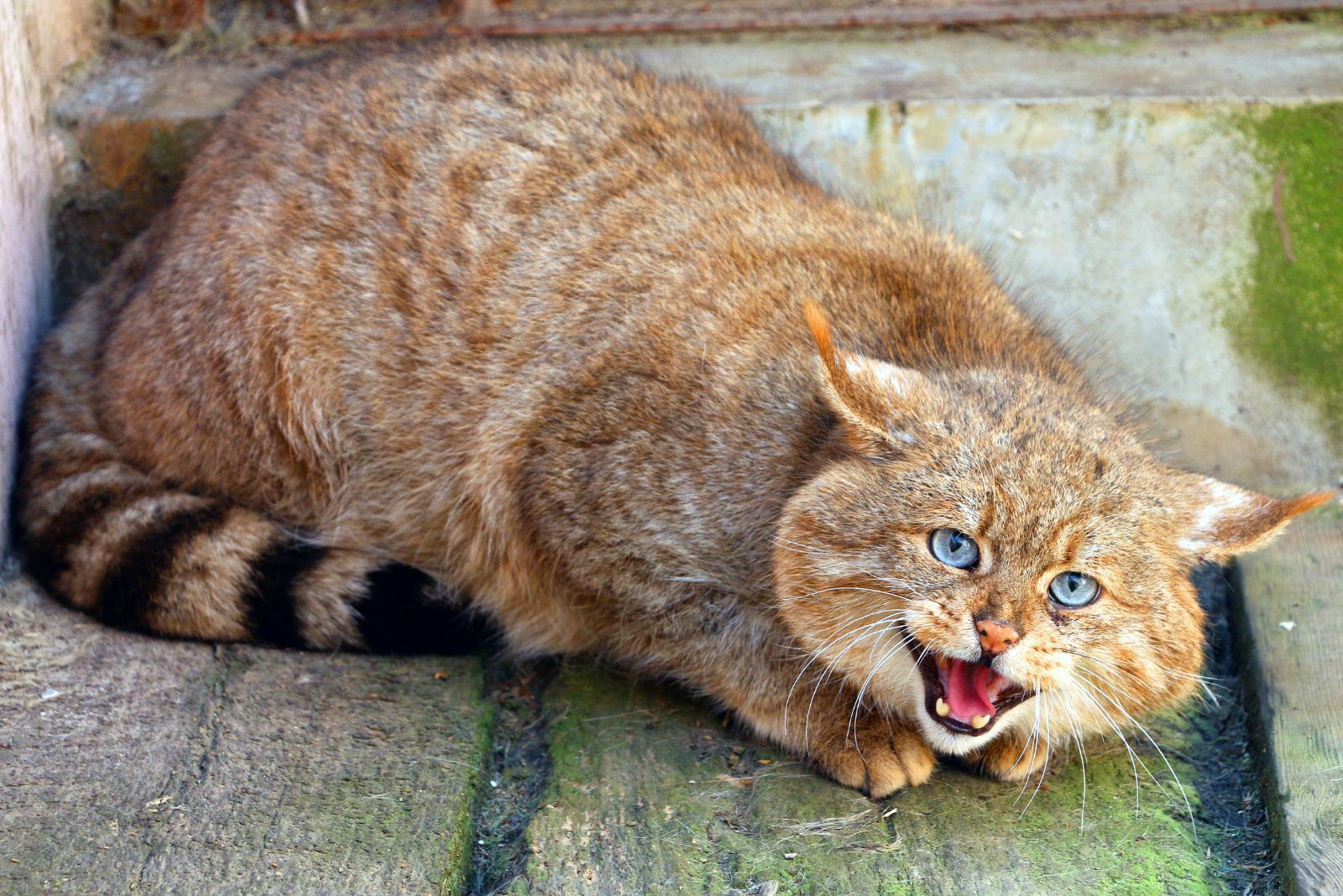
Credit: Shutterstock
The Chinese mountain cat, also known as the Chinese desert cat and the Chinese steppe cat, is a small wild cat found in the mountains of western China.
It is listed as a Vulnerable species by the International Union for Conservation of Nature (IUCN), as the total population is estimated to be fewer than 10,000 individuals, with a declining trend.
The Chinese mountain cat is adapted to living in rocky, arid environments and preys on small mammals such as pikas and rodents. It is a solitary cat that is primarily active at dawn and dusk.
Little is known about the species’ behavior and ecology, as it is rare and elusive and has only been studied in a few isolated locations.
2. Jungle Cat
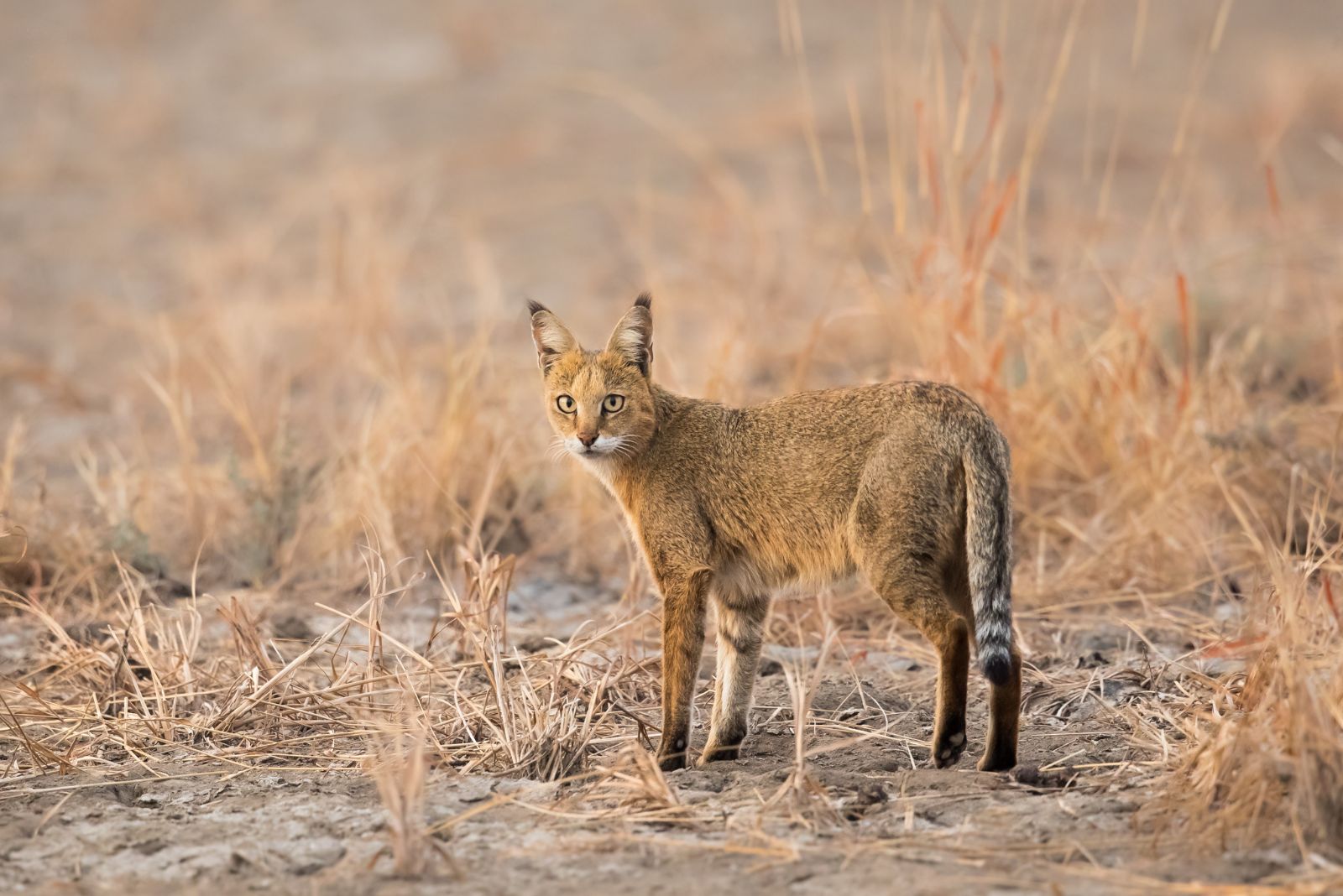
Credit: Shutterstock
The jungle cat (Felis chaus), also known as the reed cat or swamp cat, is a medium-sized wild cat found in a variety of habitats across a large part of Asia, including the Indian subcontinent, the Middle East, and Southeast Asia.
It is a versatile and adaptable species that can live in a range of habitats, including forests, grasslands, swamps, and agricultural areas. Jungle cats are solitary and territorial animals that hunt various prey, including small mammals, birds, and reptiles.
They are active during the day and use vocalizations, scent marking, and visual displays to communicate with other cats.
3. Black-Footed Cat
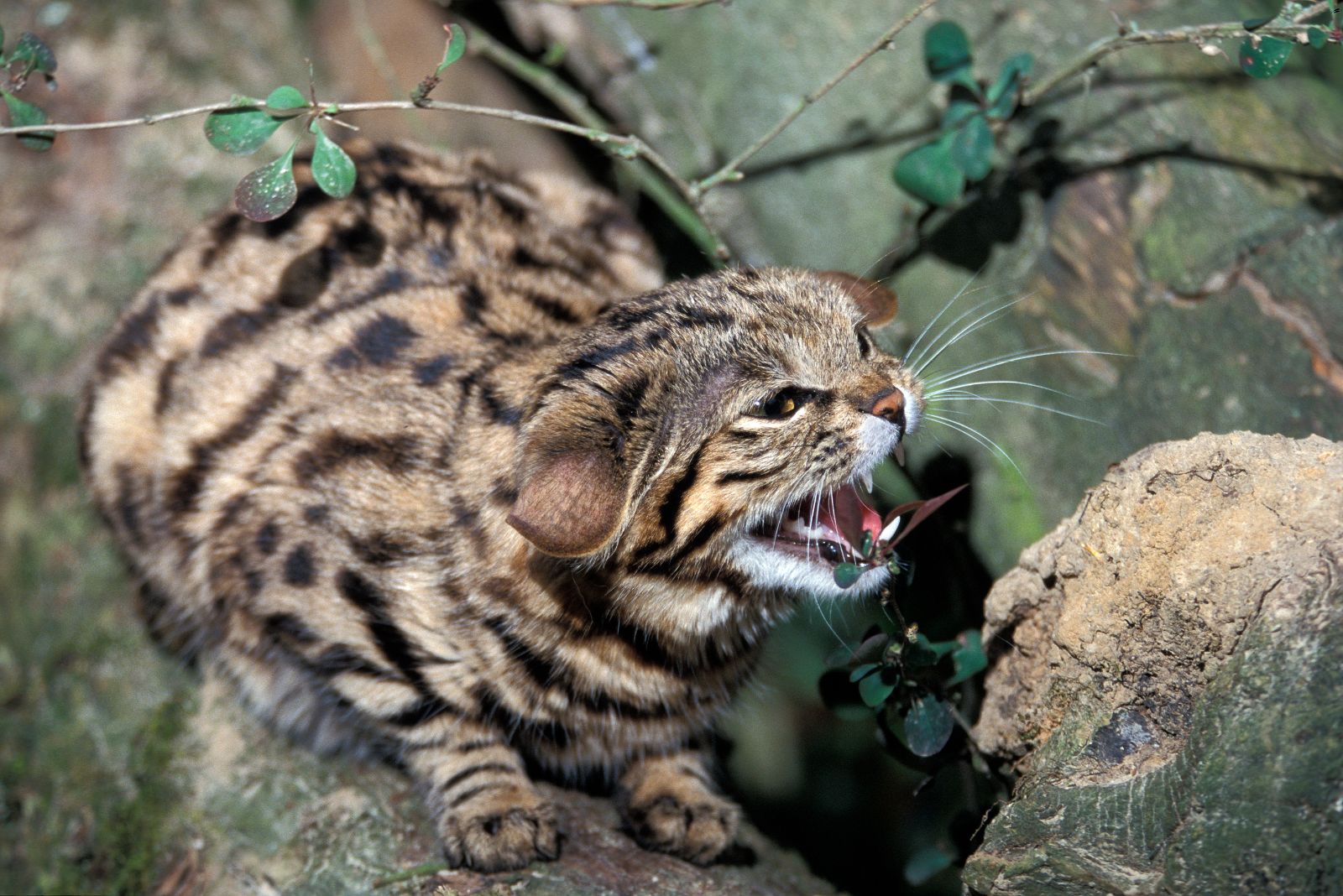
Credit: Shutterstock
The black-footed cat (Felis nigripes), also known as the small-footed cat or African black-footed cat, is a small wild cat native to the grasslands and savannas of southern Africa.
It is the smallest wild cat on the continent and is known for its large ears, short legs, and black paws, which give it its distinctive appearance.
Black-footed cats are nocturnal and solitary animals that hunt mostly rodents and small birds. They are adaptable and can survive in a variety of habitats, including semi-arid regions, but they are found mainly in areas with a reliable source of water.
4. European Wildcat
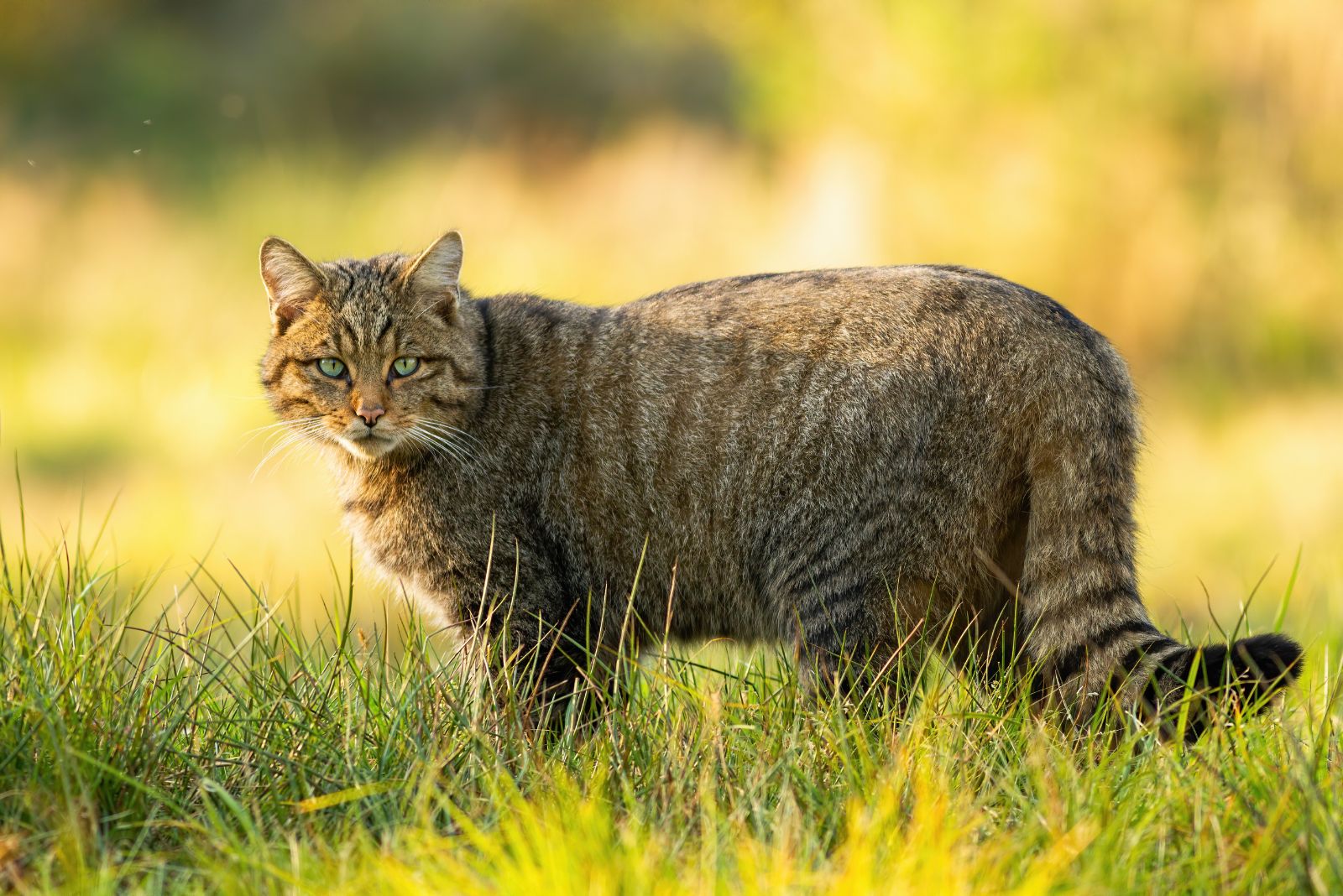
Credit: Shutterstock
The European wildcat is a small to medium-sized wild cat breed found in various European habitats, including forests, grasslands, and mountainous areas. It is a close relative of the domestic cat and is thought to be the ancestor of many domestic cat breeds.
European wildcats are solitary and territorial animals that hunt a variety of prey, including rodents, birds, and rabbits. They are active mainly at dawn and dusk and use vocalizations, scent marking, and visual displays to communicate with other cats.
5. Sand Cat
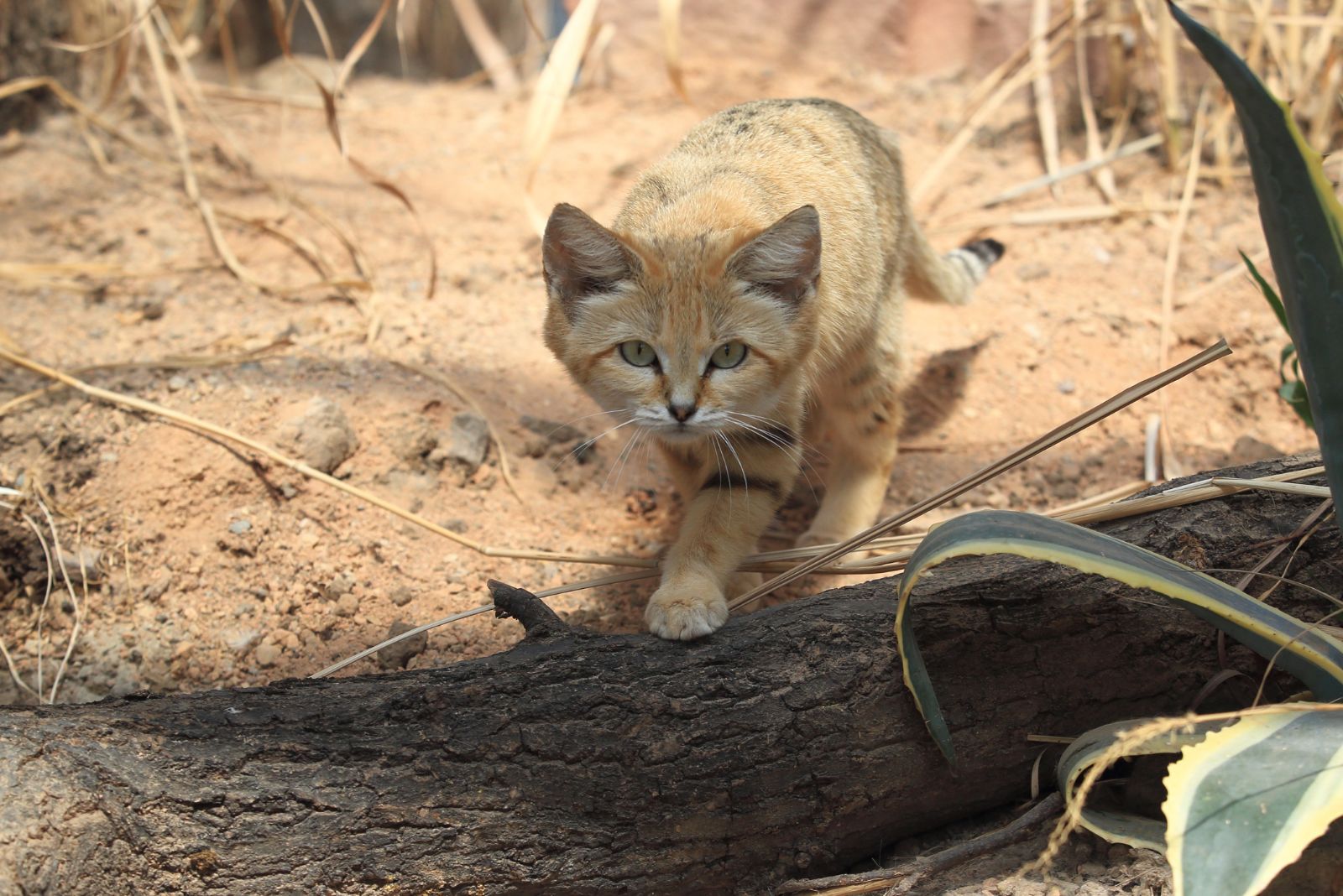
Credit: Shutterstock
The sand cat (Felis margarita), also known as the sand dune cat, is a small wild cat found in sandy and arid environments in North Africa and central Asia. It is adapted to living in harsh desert conditions and is able to withstand extreme temperatures.
Sand cats are nocturnal and solitary animals that hunt small mammals, birds, and reptiles. They are well-camouflaged in their sandy habitat and are difficult to spot, making them little-known and elusive.
6. Sunda Leopard Cat
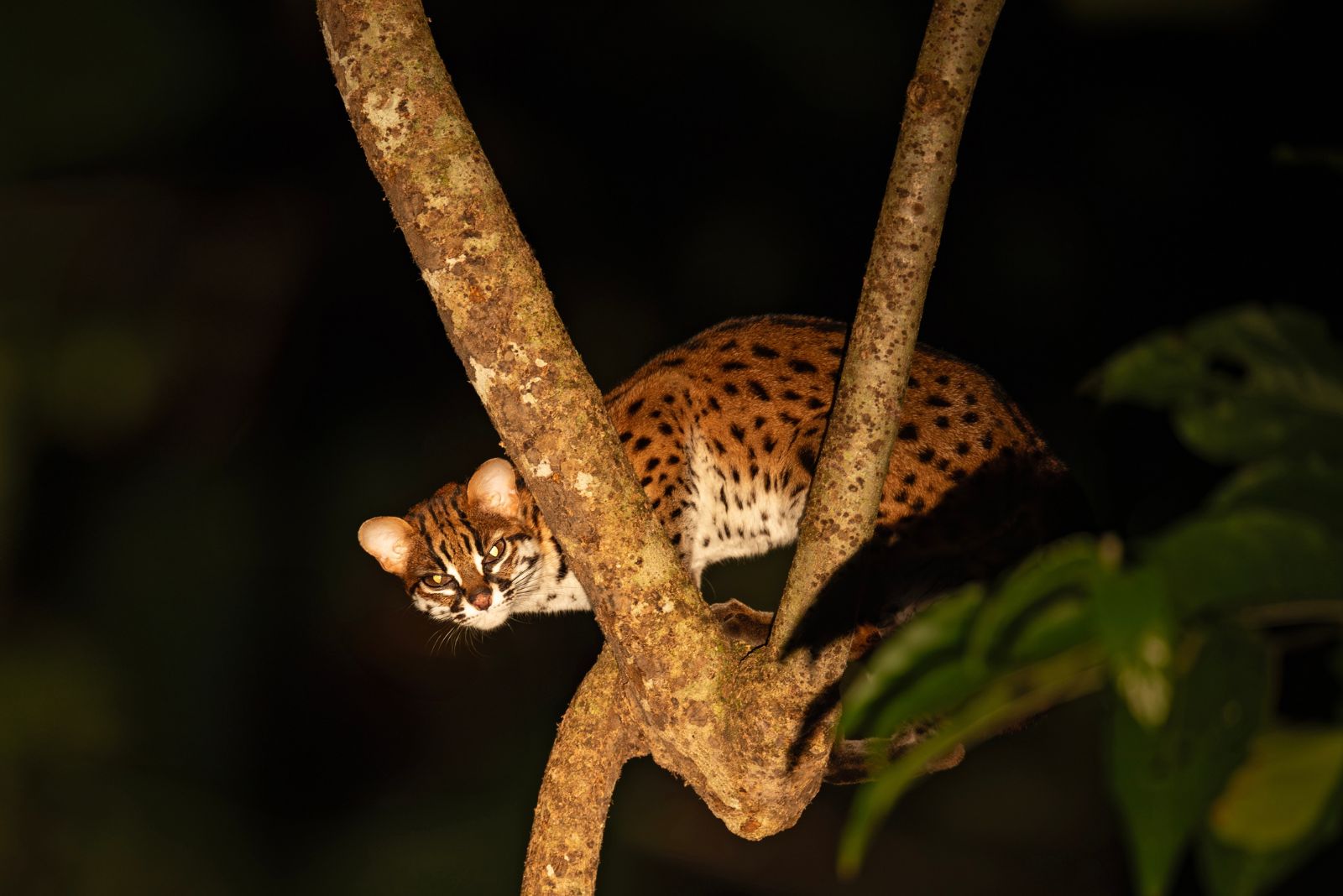
Credit: Shutterstock
The Sunda leopard cat, also known as the Javan leopard cat, is a small wild cat found in the forests of Java, Sumatra, and Borneo in Indonesia.
It is a close relative of the domestic cat and is thought to be the ancestor of the Asian leopard cat, a popular breed of domestic cat.
Sunda leopard cats are agile climbers and nocturnal hunters that prey on small mammals, birds, and reptiles. They are shy and elusive animals that are rarely seen by humans.
7. Mainland Leopard Cat
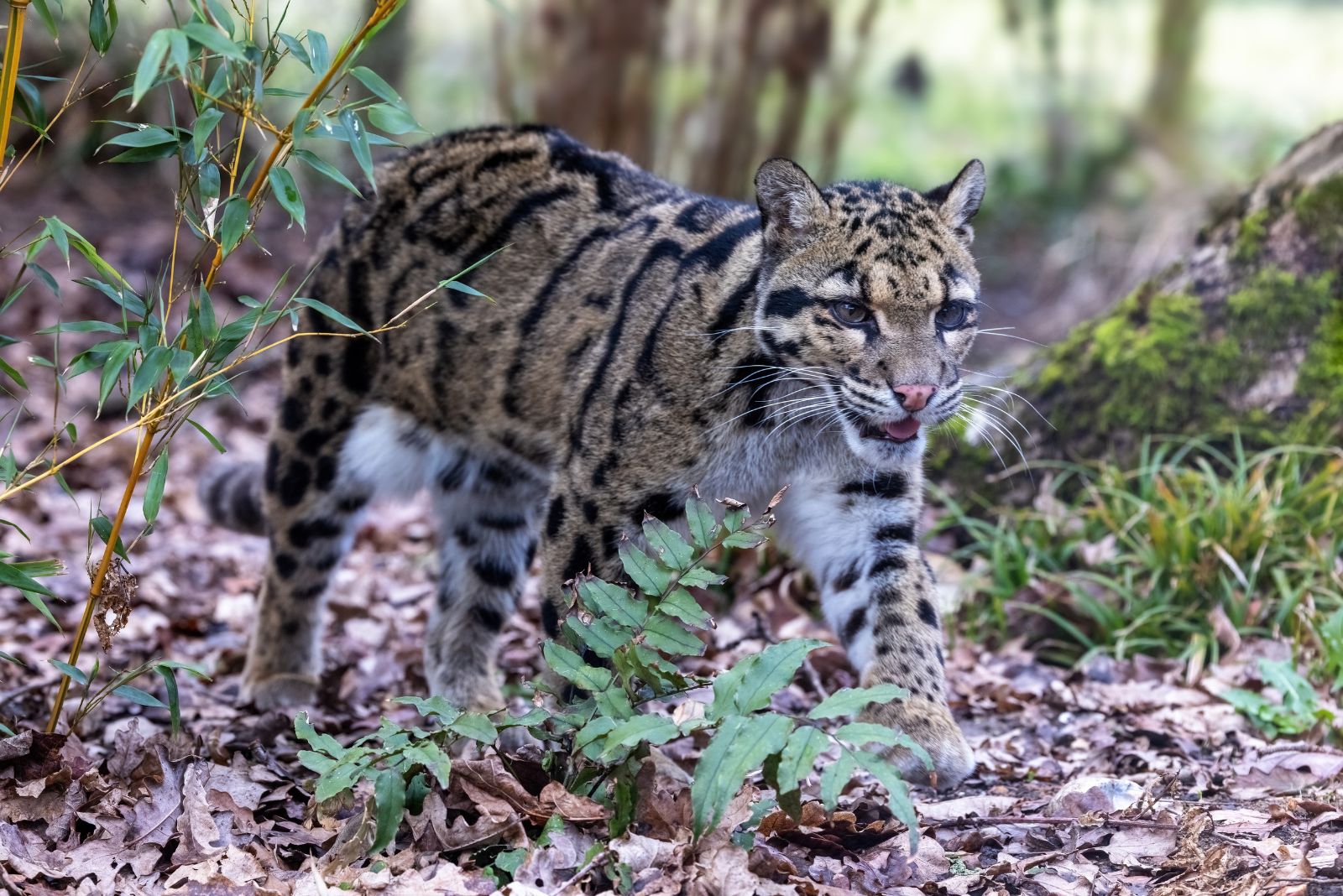
Credit: Shutterstock
The mainland leopard cat (Prionailurus bengalensis) is a small wild cat breed found in a variety of habitats across much of Asia, including forests, grasslands, and agricultural areas.
It is a close relative of the domestic cat and is thought to be the ancestor of several Asian domestic cat breeds.
8. Flat-Headed cat
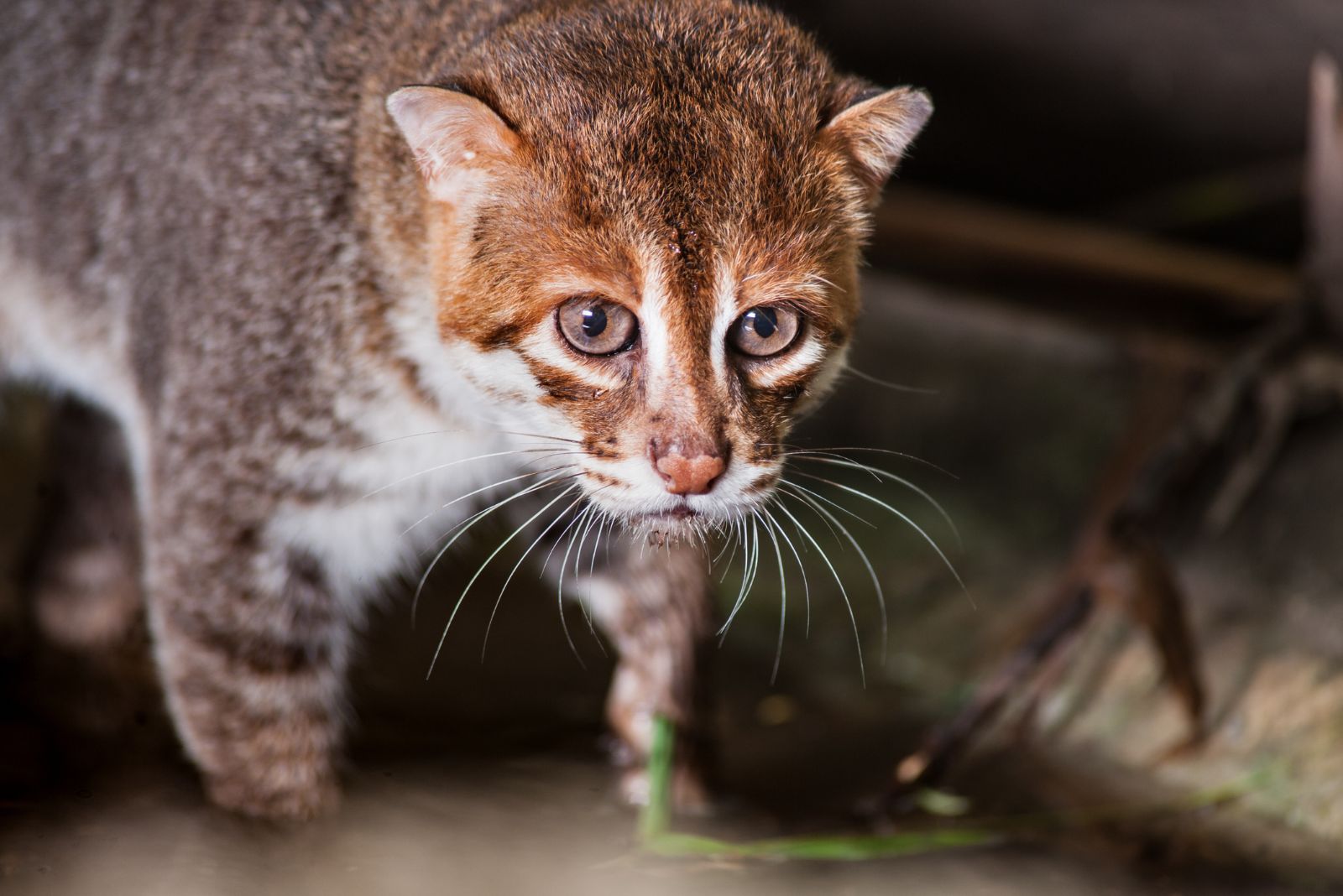
Credit: Shutterstock
The flat-headed cat (Prionailurus planiceps) is a small, rare wild cat found in the lowland forests of the Malay Peninsula, Borneo, and Sumatra.
It is a semi-aquatic species that is adapted to living in wetland environments and is known for its unique body shape, with a flattened head and neck, short legs, and webbed toes. Flat-headed cats are nocturnal and solitary animals that feed mainly on fish.
9. Fishing Cat
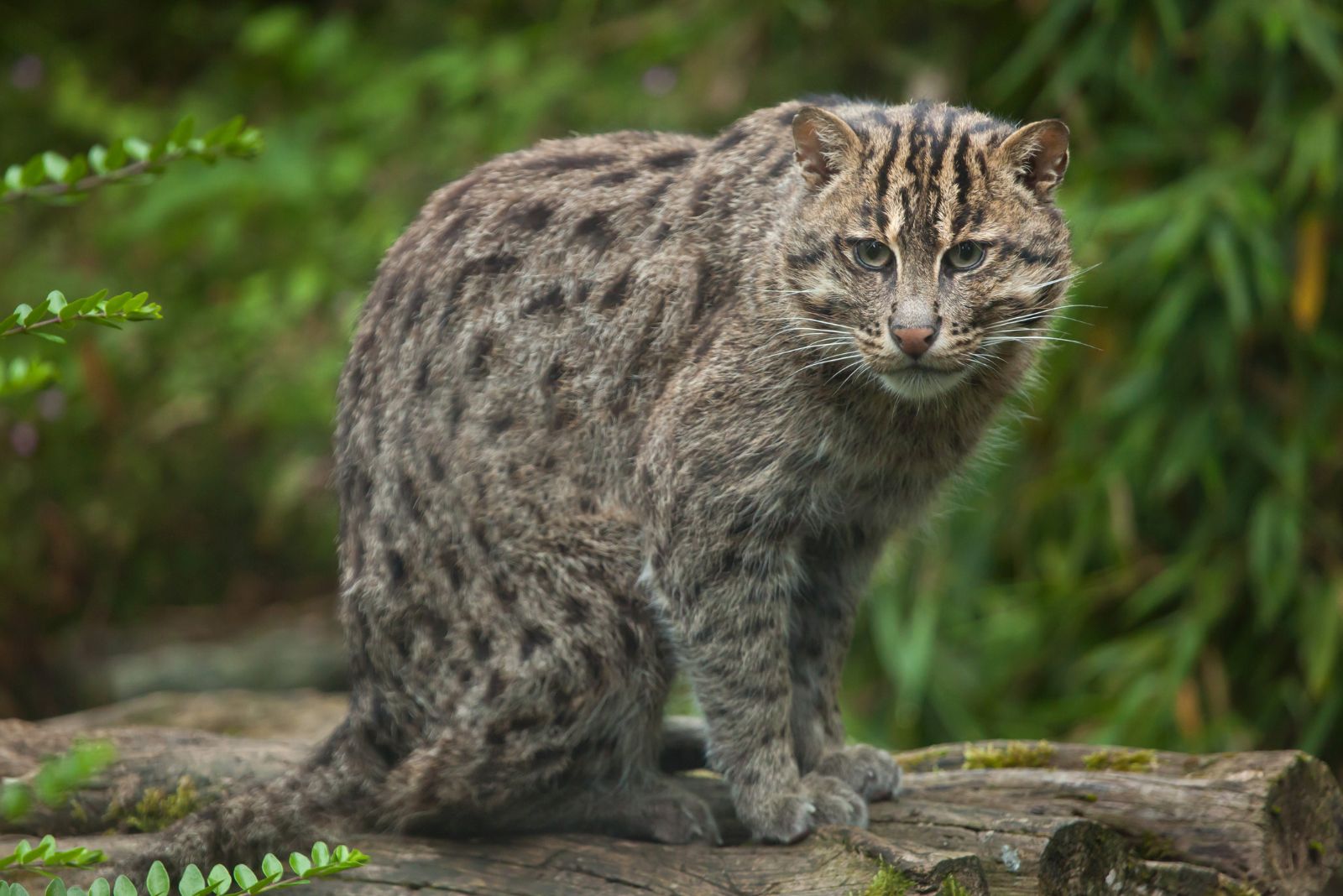
Credit: Shutterstock
The fishing cat is a medium-sized wild cat found in the wetlands of South and Southeast Asia.
As its name suggests, it is an adept swimmer and fisherman, and it feeds mainly on fish and other aquatic prey. Fishing cats are adapted to living in wetland environments and are found in a variety of habitats, including marshes, swamps, and mangrove forests.
10. Pallas Cat
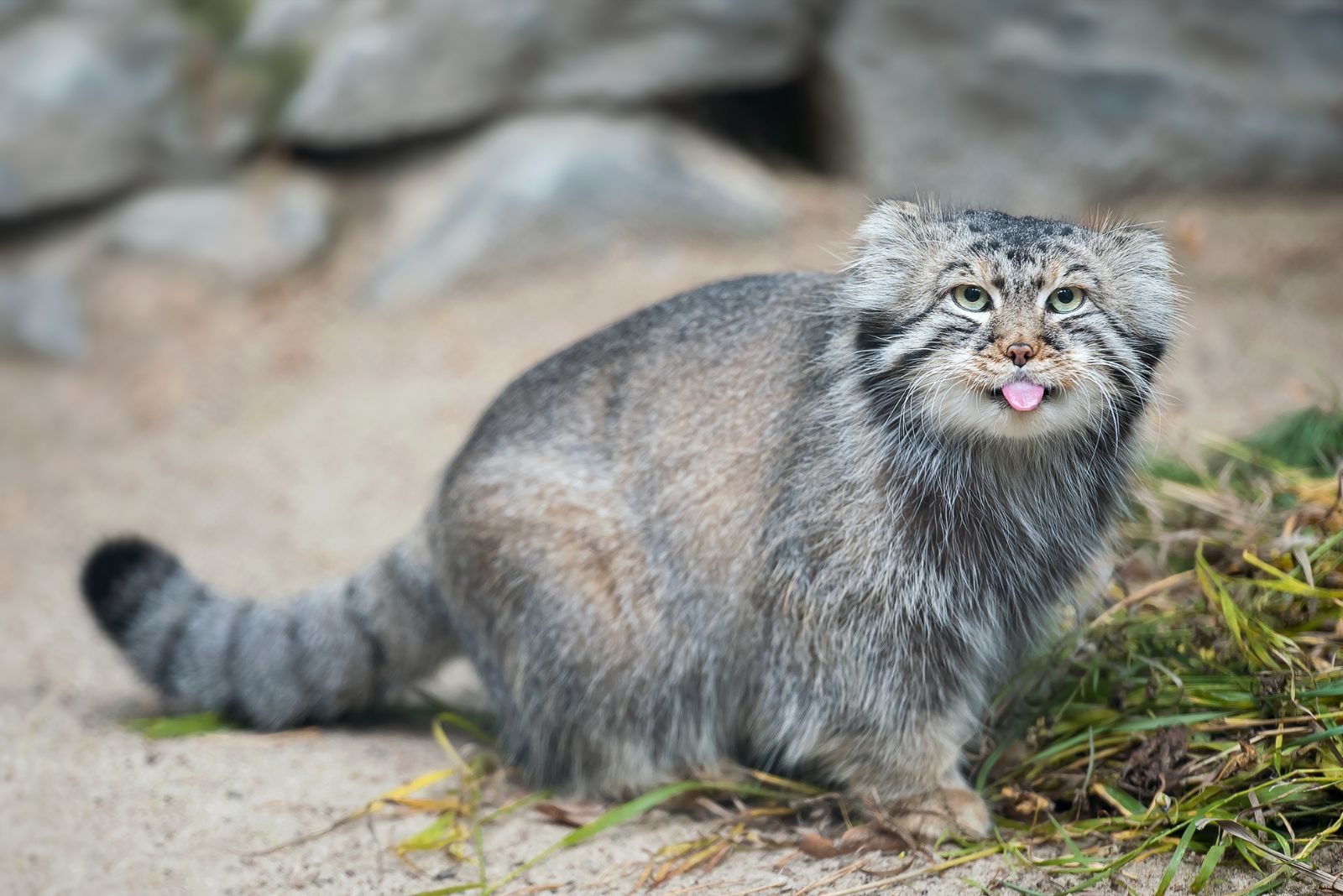
Credit: Shutterstock
The Pallas’s cat (Otocolobus manul), also known as the manul, is a small wild cat found in the grasslands and montane steppes of central and eastern Asia.
It is a stocky cat with a thick coat, short legs, and a round face, and it is adapted to living in cold, dry environments.
11. Rusty-Spotted Cat
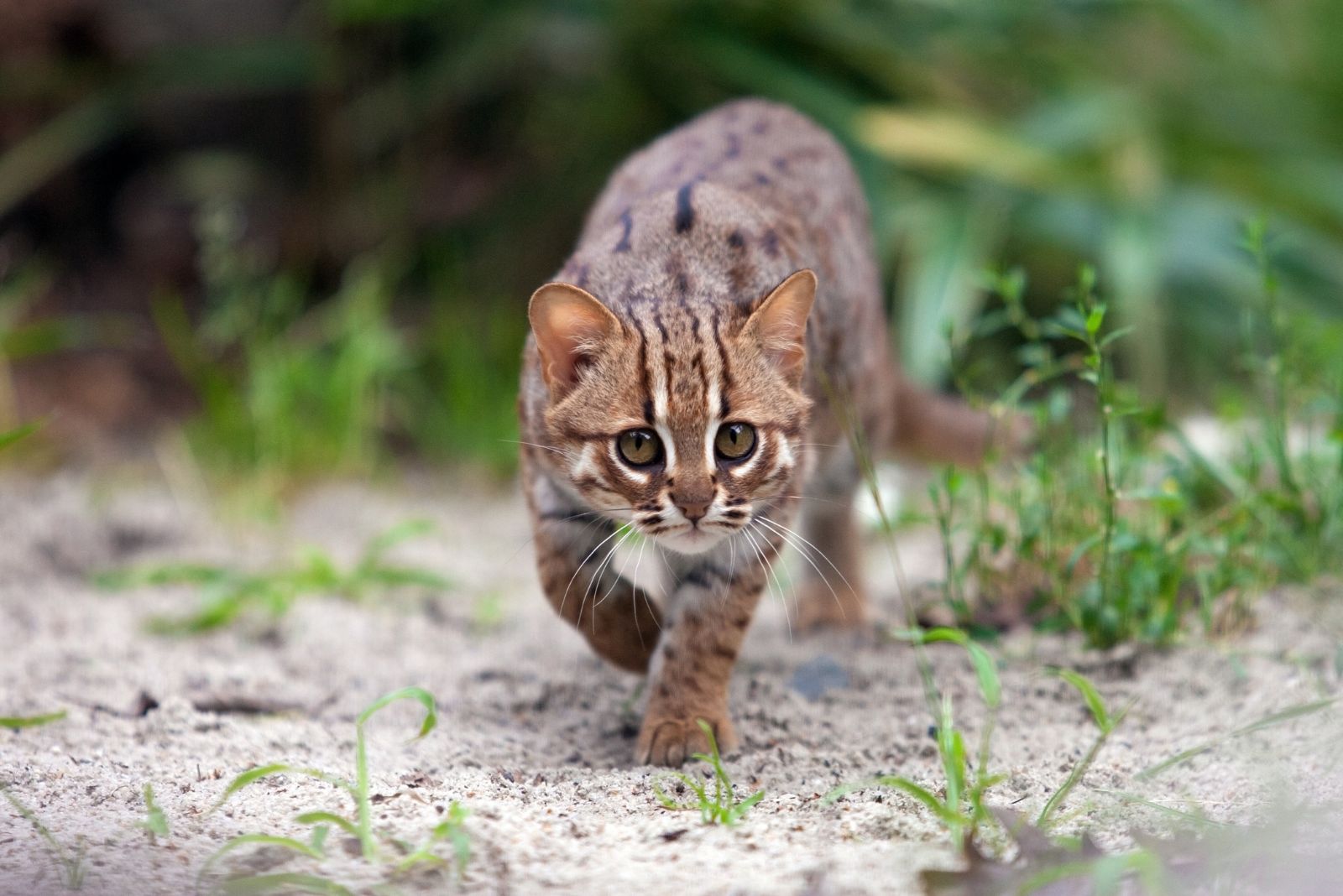
Credit: Shutterstock
A tiny wild cat native to India and Sri Lanka, and it’s one of the smallest wild cats in the world. Despite its small size, the Rusty Spotted Cat packs a lot of charm and intrigue, with its beautifully patterned coat of rusty orange and black spots that help it blend into its forested habitat.
This elusive and nocturnal predator is known for its agility, often hunting small prey like rodents, birds, and insects. It has a slender body, sharp eyes, and long, delicate limbs that allow it to navigate dense underbrush and climb trees with ease.
12. Jaguarundi
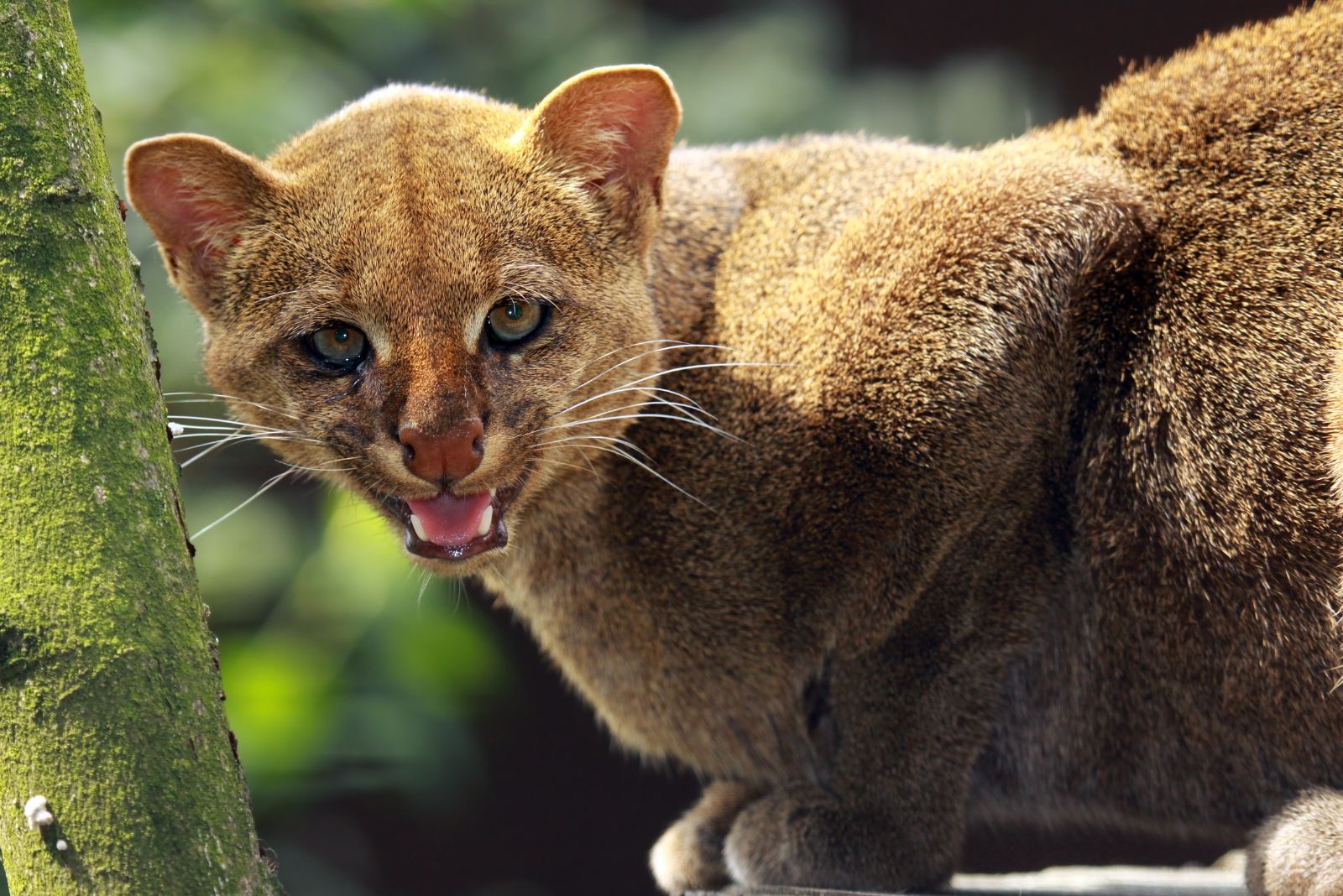
Credit: Shutterstock
The jaguarundi (Herpailurus yagouaroundi) is a small wild cat found in the forests, grasslands, and wetlands of Central and South America.
It is a slender, long-bodied cat with a short tail and a distinctive head shape, and it is adapted to living in a variety of habitats.
13. Cheetah
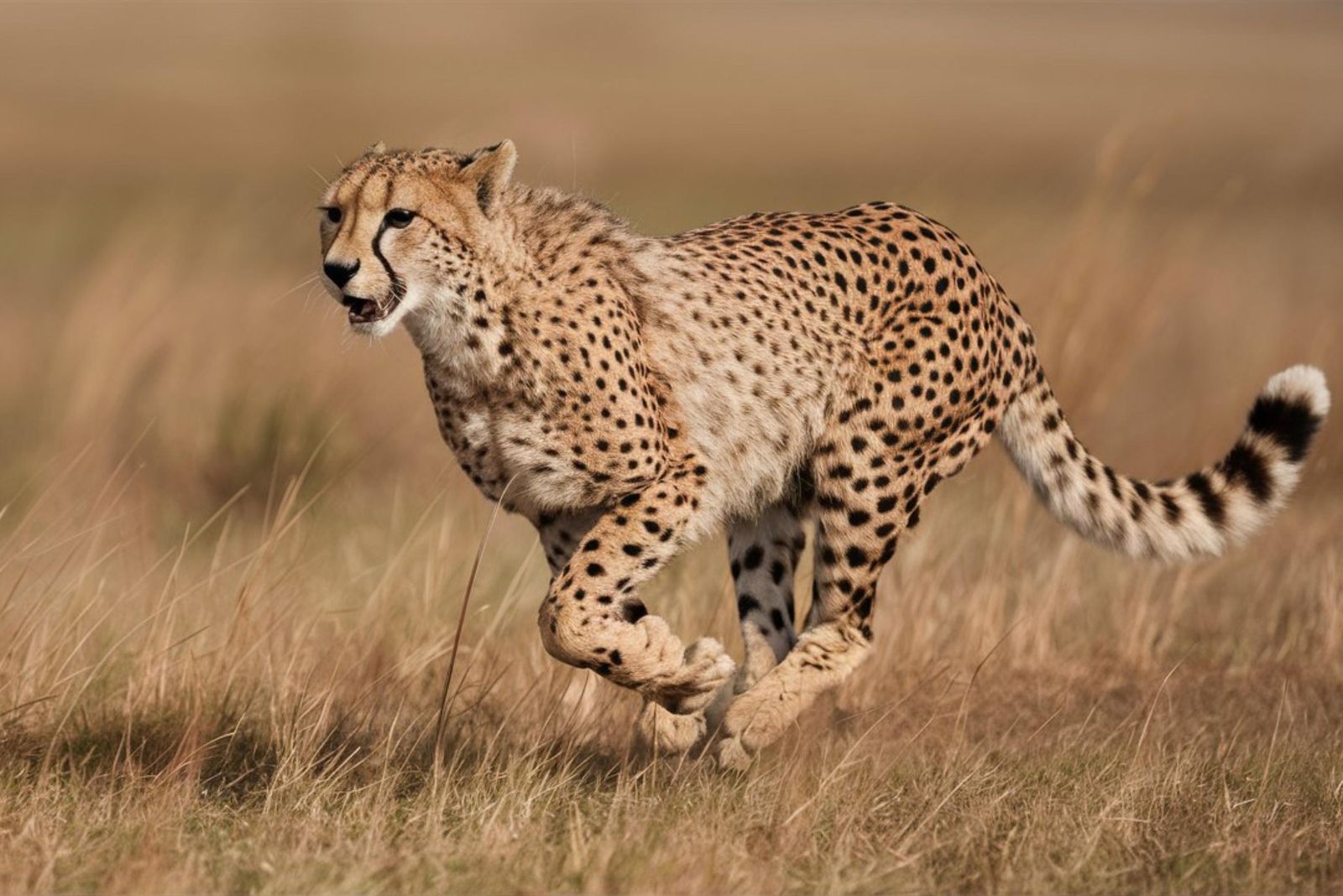
Credit: Shutterstock
The cheetah is a large cat found in a variety of habitats across Africa and a small part of Iran.
It is the fastest land animal in the world, capable of reaching speeds of up to 75 mph (120 km/h) in short bursts. Cheetahs are adapted to living in open, grassland environments and are known for their slender build, long legs, and distinctive black spots.
They are carnivorous and hunt a variety of prey, including antelopes and gazelles. Cheetahs are generally solitary and territorial animals, although females may live in small groups with their offspring.
14. Eurasian Lynx
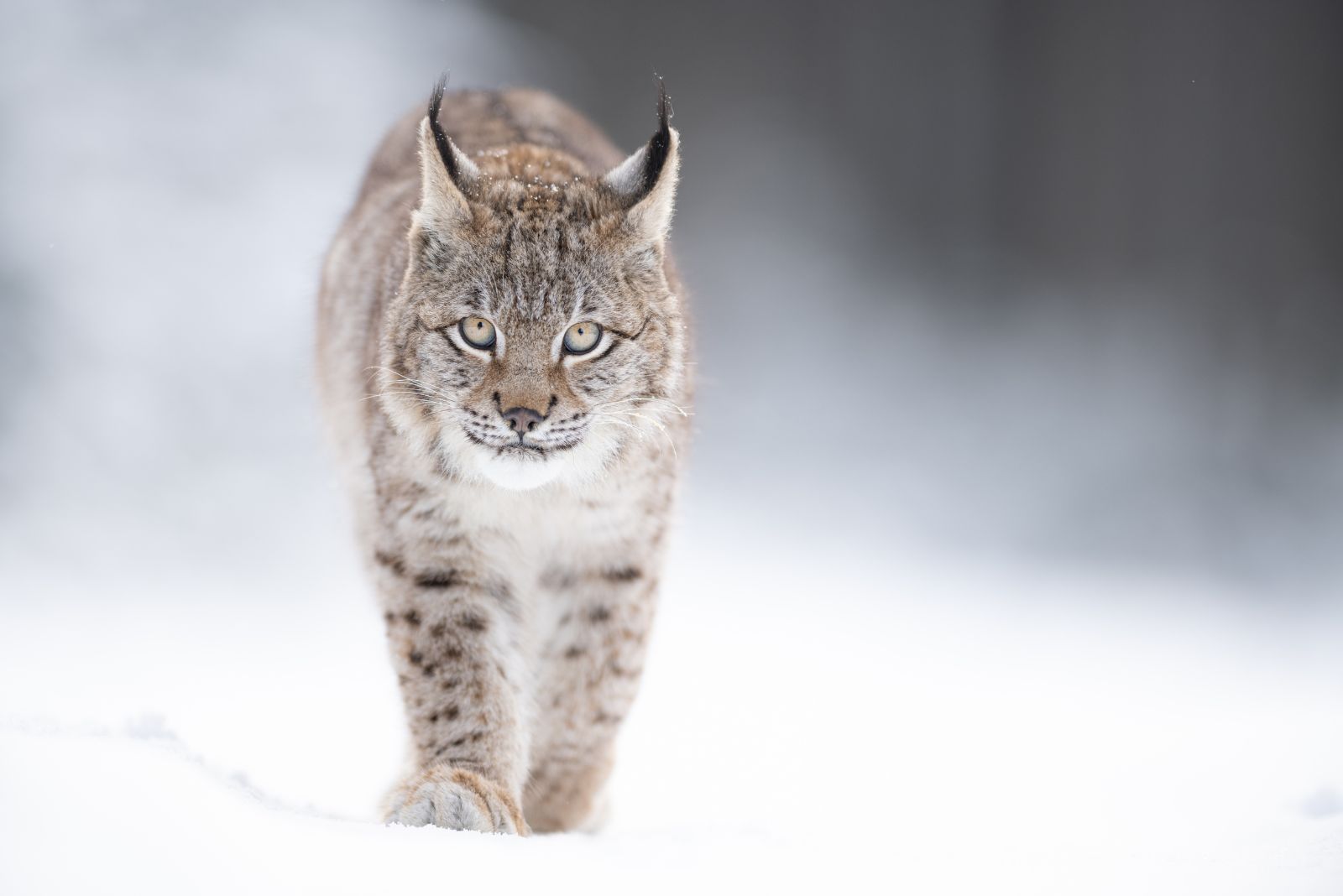
Credit: Shutterstock
The Eurasian lynx is a medium-sized wild cat found in a variety of habitats across Europe and Asia, including forests, grasslands, and mountainous areas.
It is the largest lynx species and is known for its long legs, tufted ears, and distinctive coat pattern. Eurasian lynxes are solitary and territorial animals that hunt a variety of prey, including rabbits, hares, and small mammals.
They are skilled climbers and have excellent eyesight, hearing, and smell, which they use to locate their prey.
The Eurasian lynx is listed as Near Threatened by the International Union for Conservation of Nature (IUCN) due to habitat loss, poaching, and conflict with humans. Conservation efforts are underway to protect and preserve lynx populations in the wild.
15. Canada Lynx
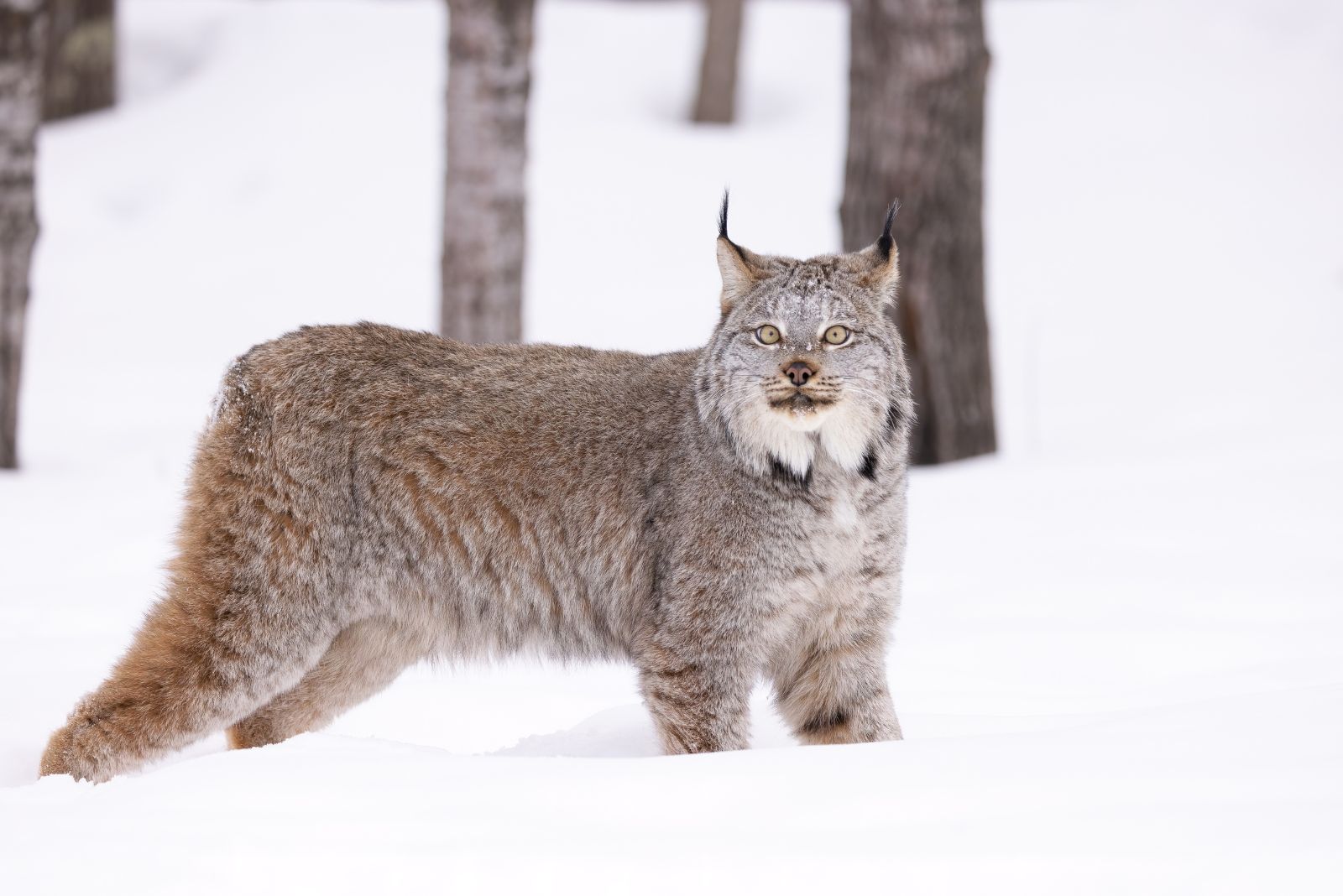
Credit: Shutterstock
The Canada lynx is a medium-sized wild cat breed found in the forests of Canada, Alaska, and the northern United States. It is adapted to living in cold, snowy environments and is known for its long legs, tufted ears, and thick fur coat.
Canada lynxes are solitary and territorial animals that hunt mostly snowshoe hares, although they will also feed on other small mammals, birds, and carrion.
16. Iberian Lynx
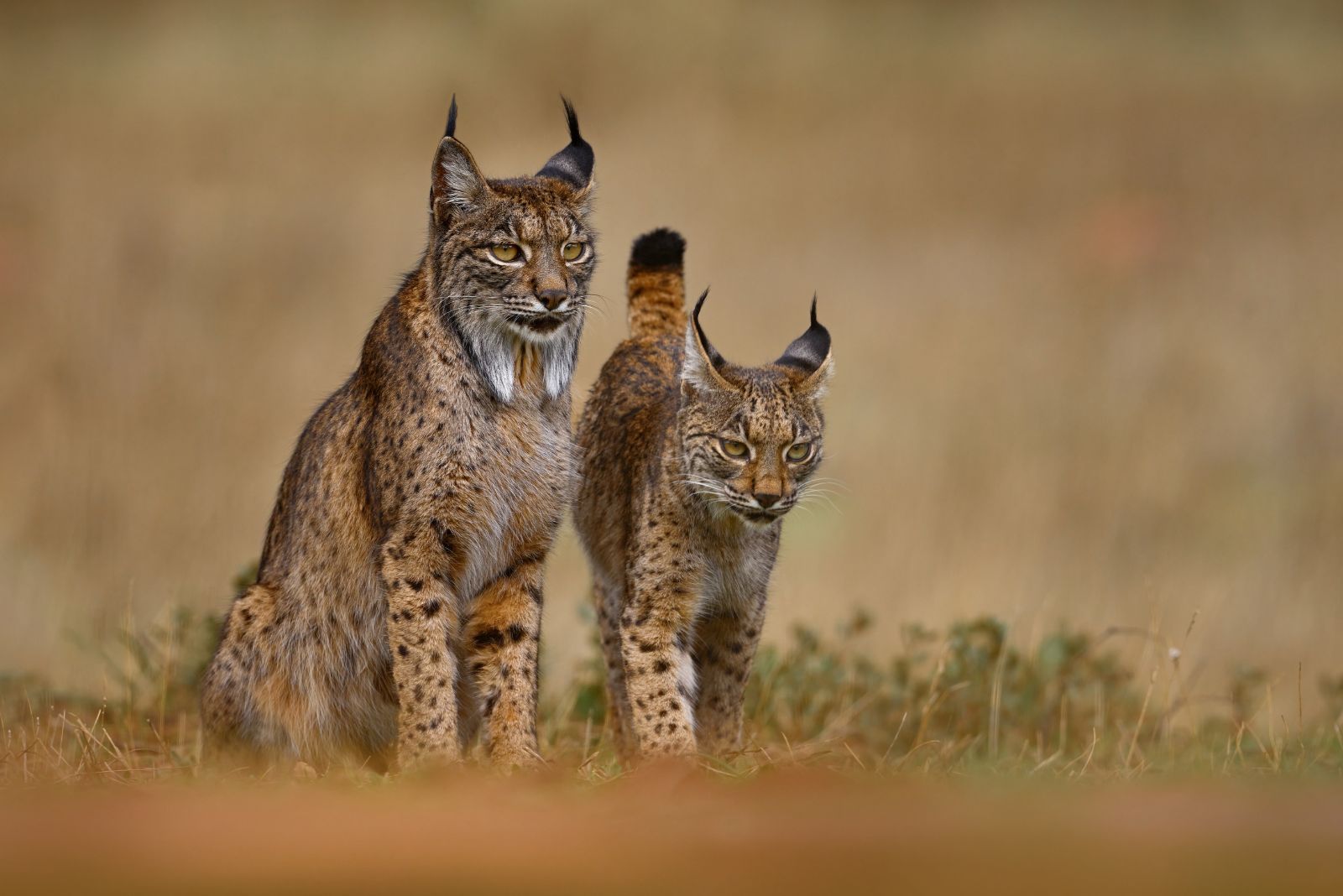
Credit: Shutterstock
The Iberian lynx is a small wild cat found in the forests and scrublands of the Iberian Peninsula in Spain and Portugal. It is the most endangered feline species in the world, with fewer than 200 individuals remaining in the wild.
The Iberian lynx is adapted to living in Mediterranean habitats and is known for its long legs, tufted ears, and distinctive coat pattern. It is a solitary and territorial animal that feeds mainly on rabbits, although it will also prey on other small mammals and birds.
The Iberian lynx is listed as Critically Endangered by the International Union for Conservation of Nature (IUCN) due to habitat loss, poaching, and a decline in its main prey, the European rabbit.
17. Kodkod
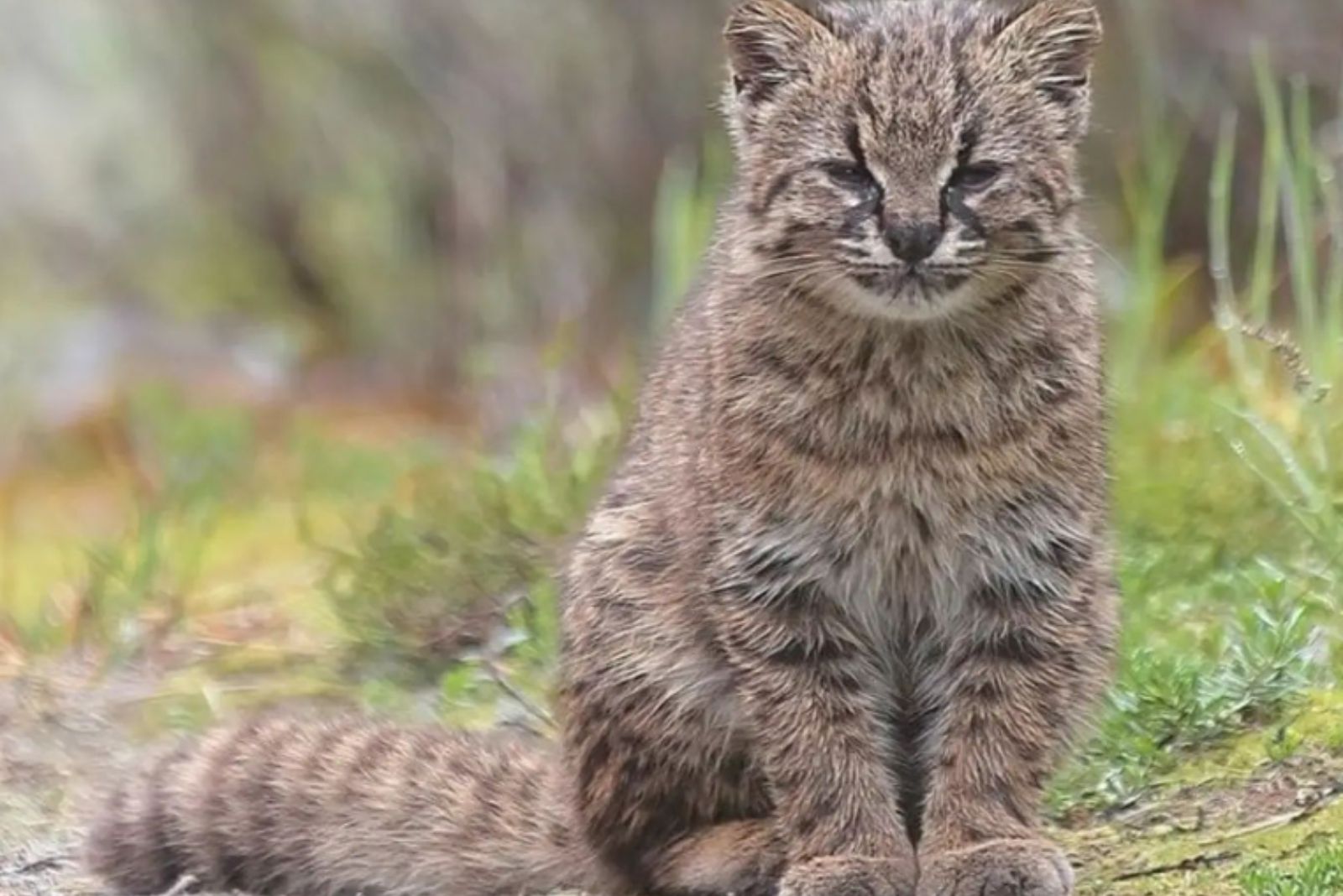
Credit: region_de_aysen_chile
The kodkod (Leopardus guigna) is a small wild cat found in the forests of Chile and Argentina in South America.
It is the smallest cat species in the Americas and is known for its small size, distinctive coat pattern that is brownish-yellow to gray-brown with dark spots., and tufted ears.
18. Andean Cat
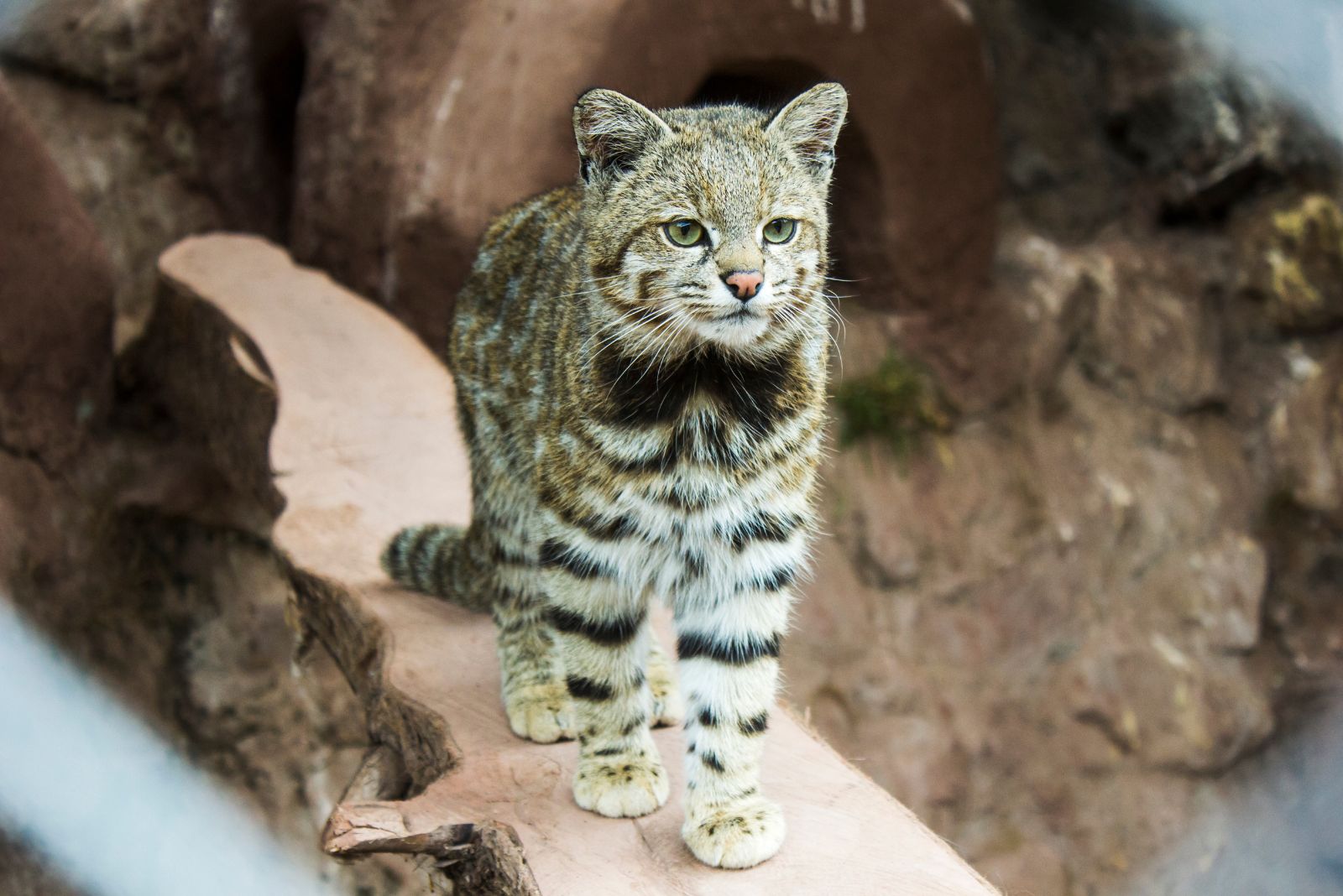
Credit Shutterstock
The Andean cat is one of the world’s most rarely seen small wild cats, found in the high-altitude grasslands and rocky cliffs of the Andes Mountains in South America.
It is a rare and elusive species that is adapted to living in harsh, arid environments and is known for its distinctive coat pattern, tufted ears, and long legs.
19. Geoffroy’s Cat
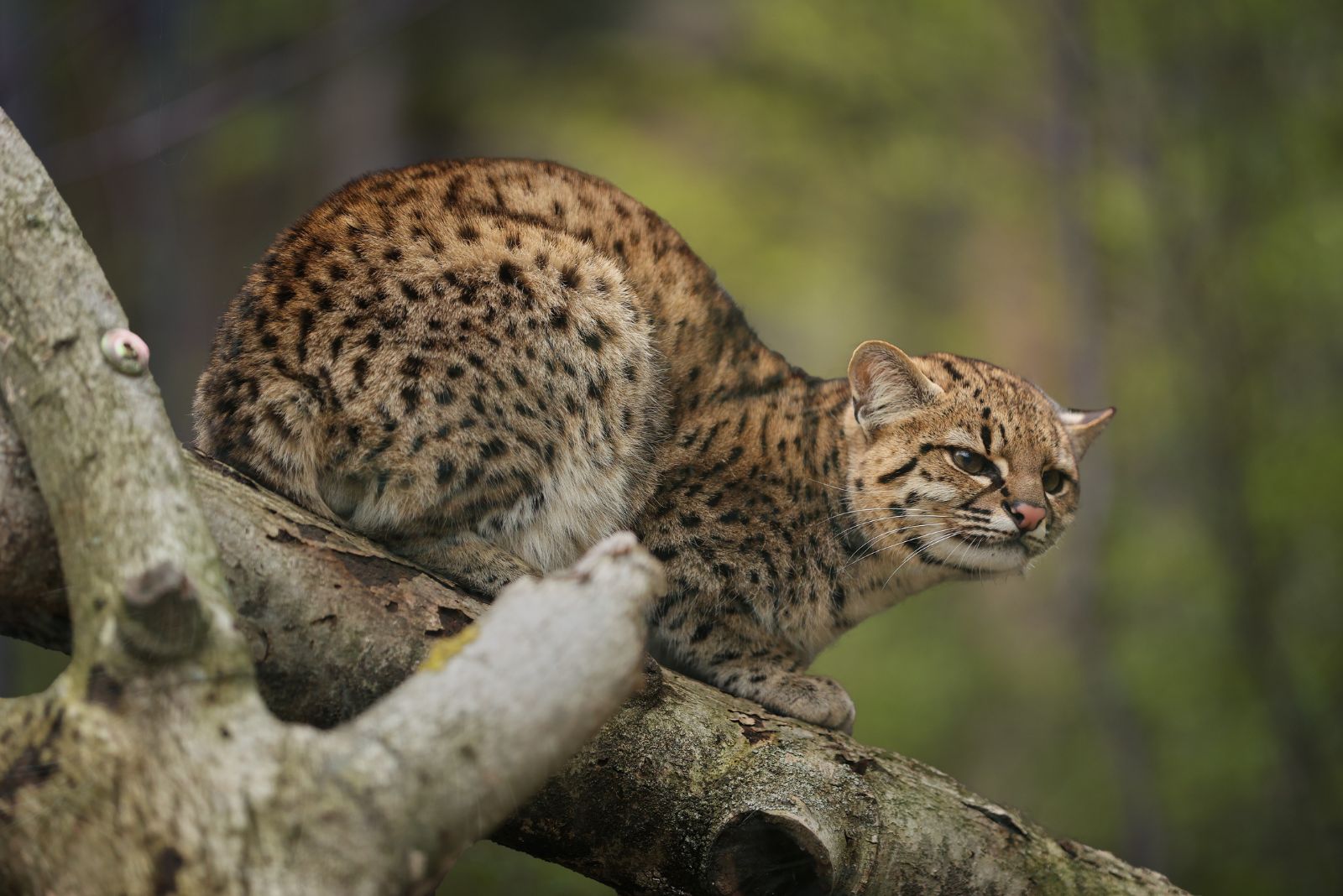
Geoffroy’s cat is a small wild cat breed similar to Kodkod but a bit larger and found in the grasslands, forests, and wetlands of South America.
It is a versatile and adaptable species that is able to survive in a variety of habitats and is known for its distinctive coat pattern.
20. Southern Oncilla
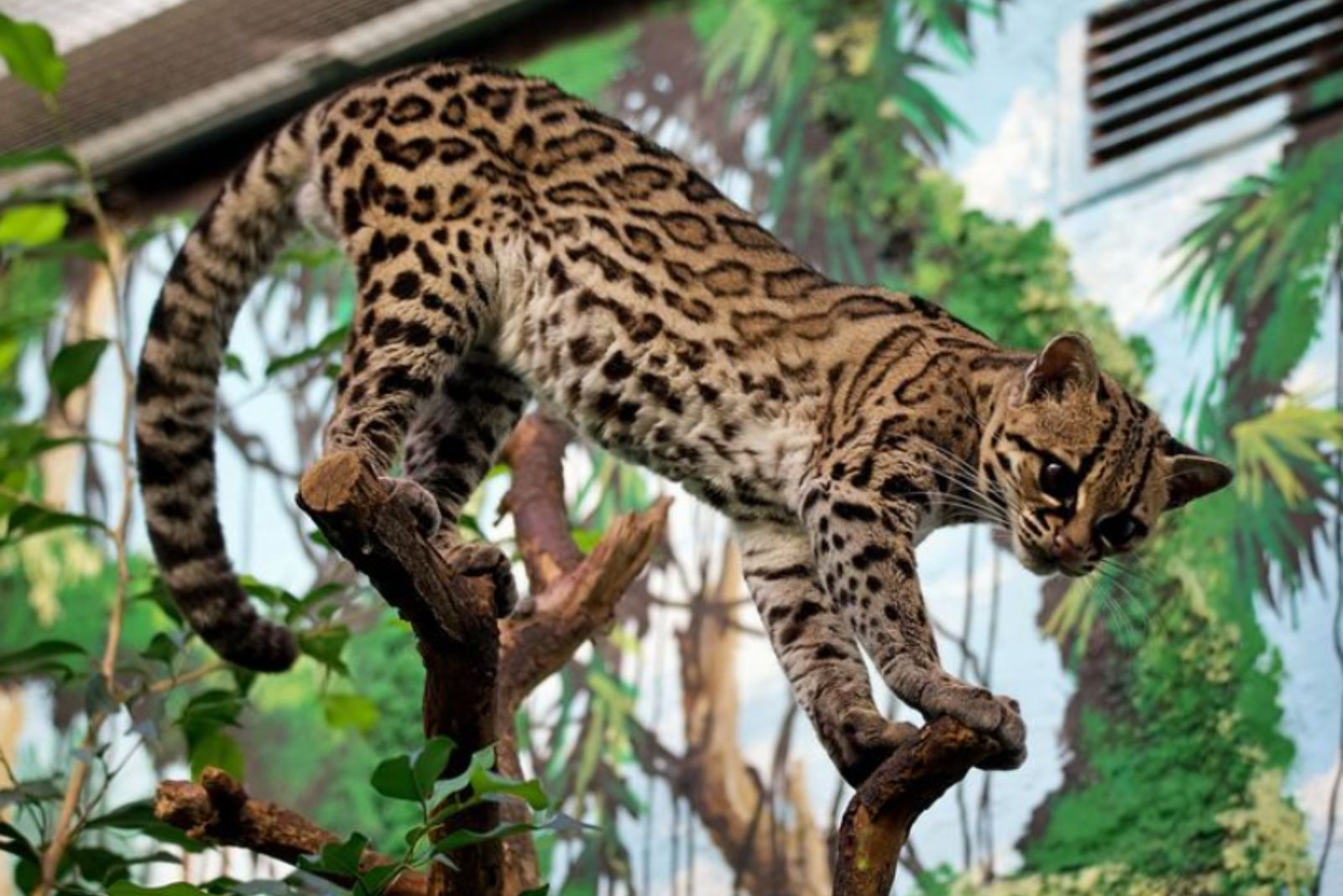
Credit: chrispiw93
The southern oncilla, also known as the tigrina, is a small wild cat found in the forests of South America.
It is a close relative of the ocelot and is known for its distinctive coat pattern, tufted ears, and long legs. Southern oncillas are nocturnal and solitary animals that hunt small mammals, birds, and reptiles. They are skilled climbers and are able to swim and dive in search of prey.
The southern oncilla is listed as Near Threatened by the International Union for Conservation of Nature (IUCN) due to habitat loss and degradation, as well as hunting and trapping.
There is still much to learn about the biology and behavior of this little-known and elusive cat.
21. Ocelot
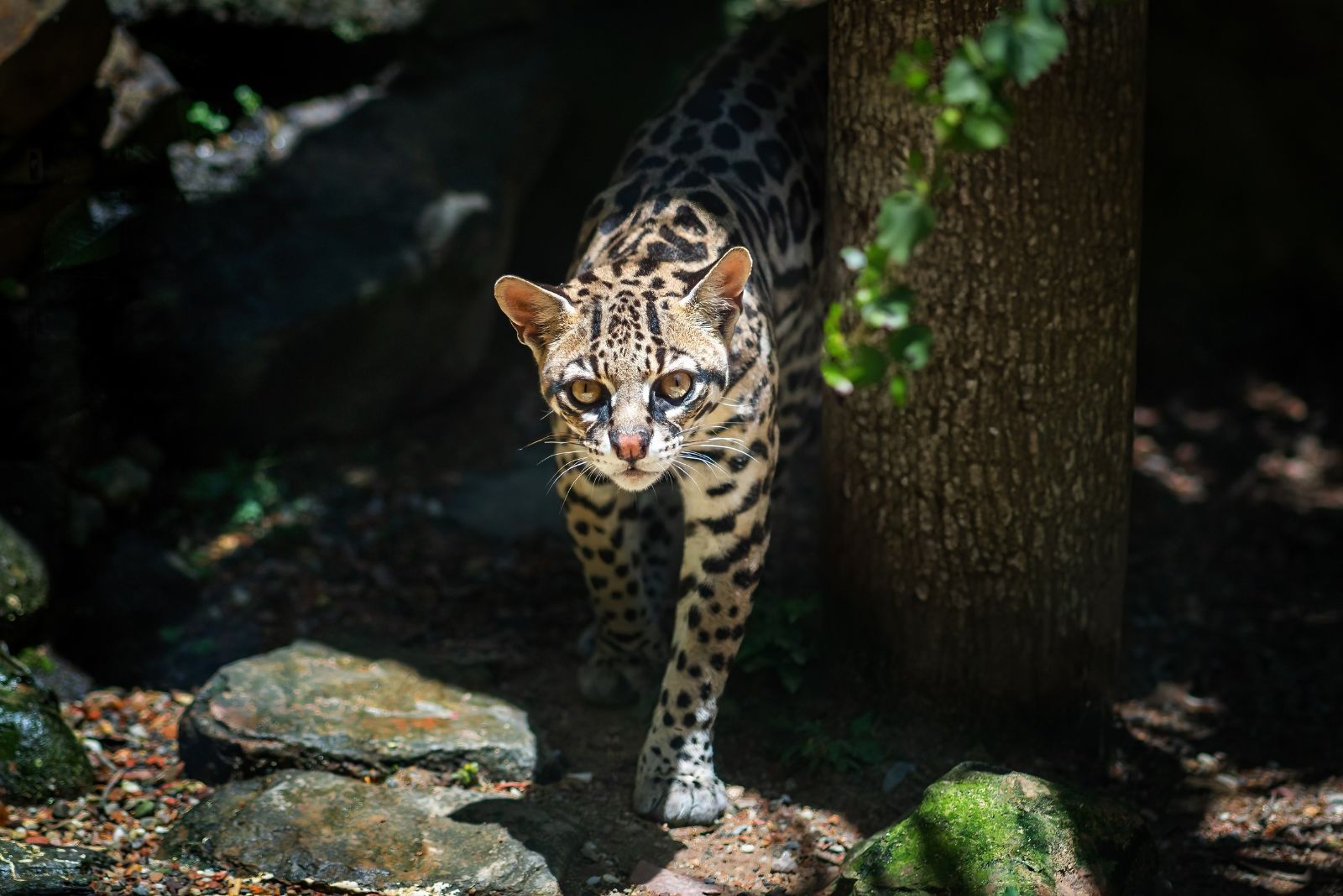
Credit: Shutterstock
The ocelot is a medium-sized wild cat found in the forests, grasslands, and wetlands of Central and South America. It is a solitary and nocturnal animal.
22. Pampas Cat

Credit: Shutterstock
The pampas cat (Leopardus colocolo) is a small wild cat found in the grasslands, savannas, and forests of South America. It is a close relative of the domestic cat.
23. Margay
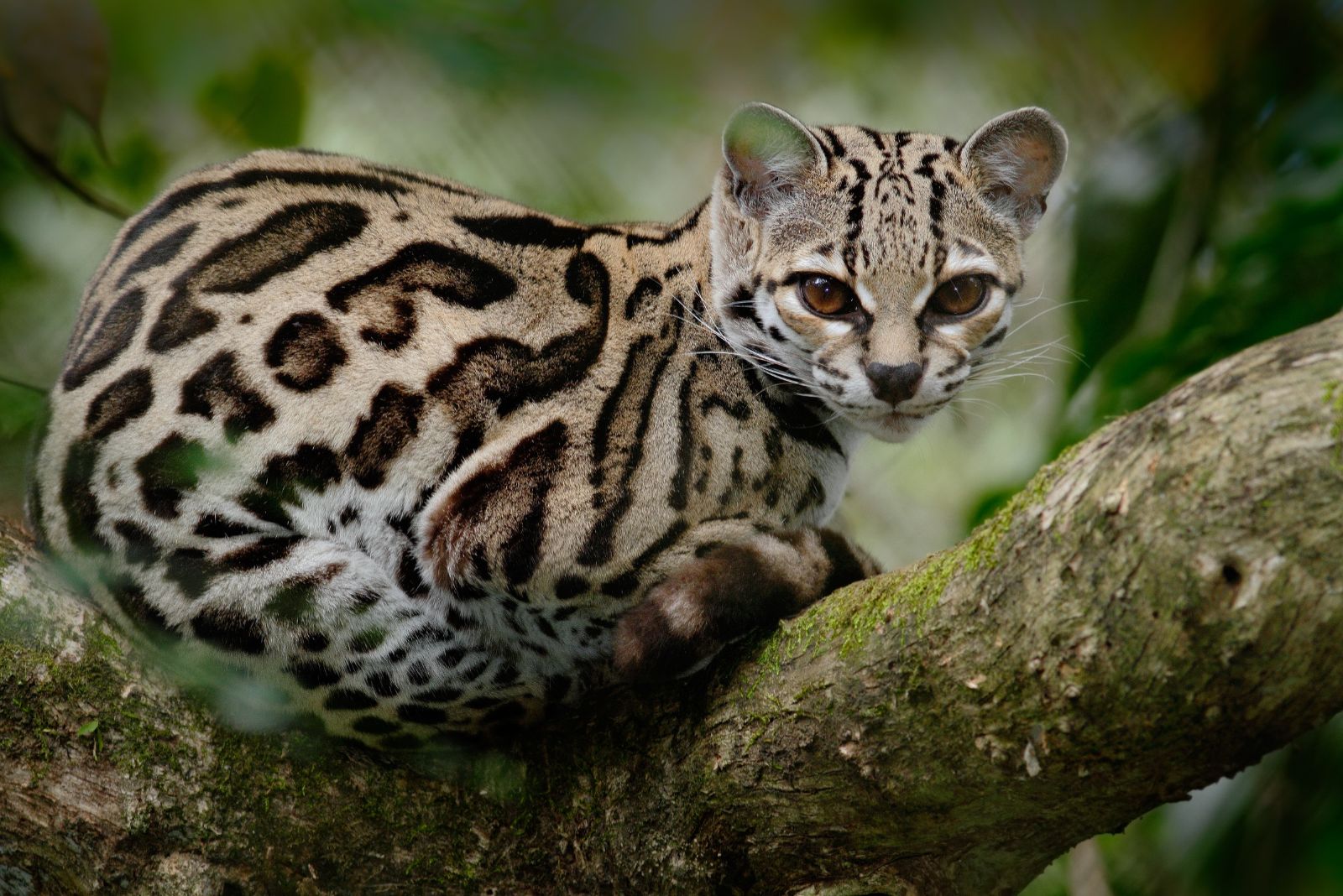
Credit: Shutterstock
The margay (Leopardus wiedii) is a small wild cat found in the forests of Central and South America.
It is a close relative of the ocelot and is known for its distinctive coat pattern, tufted ears, and long legs.
Margays are nocturnal and solitary animals that hunt small mammals, birds, and reptiles. They are skilled climbers and are able to rotate their ankles 180 degrees, which allows them to descend trees headfirst.
24. Caracal
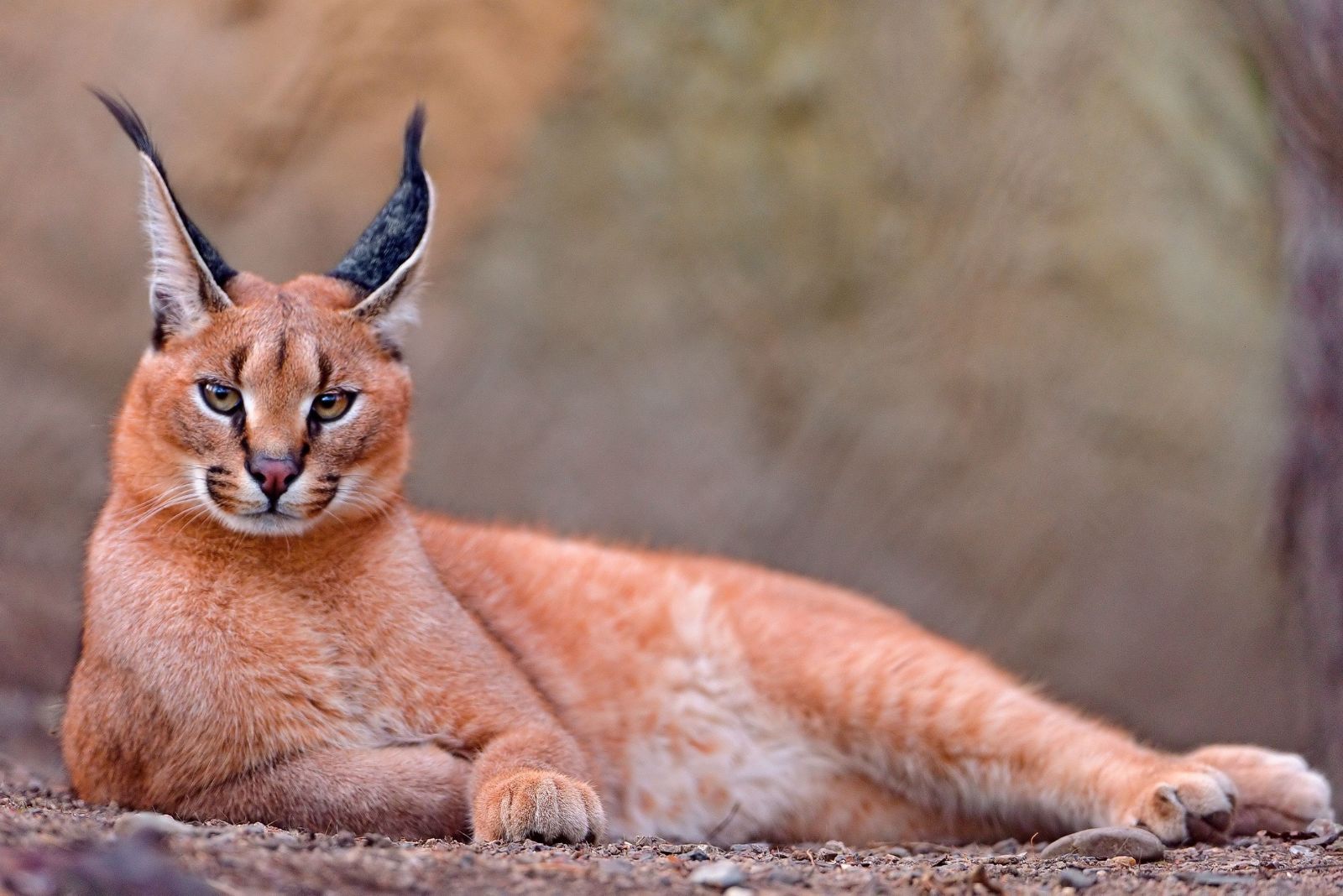
Credit: Shutterstock
The caracal (Caracal caracal) is a medium-sized wild cat found in a variety of habitats across Africa, the Middle East, and central and southern Asia.
It is a solitary and nocturnal animal that is adapted to living in arid, grassland environments and is known for its distinctive long ears and black tufts of fur on the tips of its ears.
Caracals are carnivorous and hunt a variety of prey, including small mammals, birds, and reptiles. They are skilled climbers and are able to jump up to 9 feet (2.7 meters) in the air to catch birds in flight.
25. Serval
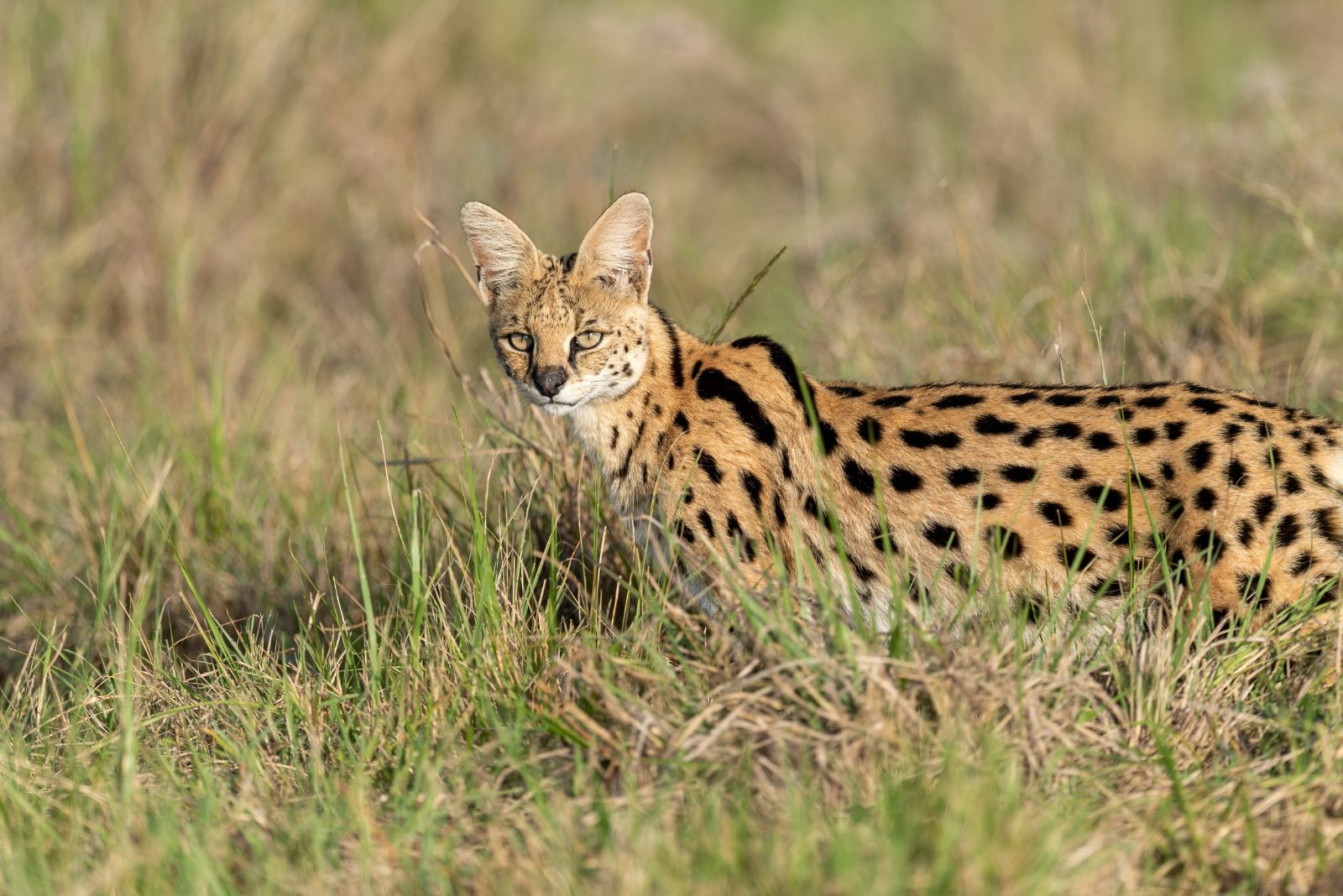
Credit: Shutterstock
The serval is a medium-sized wild cat found in the grasslands and wetlands of Africa.
It is a slender and agile cat with long legs and a distinctive coat pattern, and it is known for its ability to jump up to 10 feet (3 meters) in the air to catch birds in flight.
26. Marbled Cat
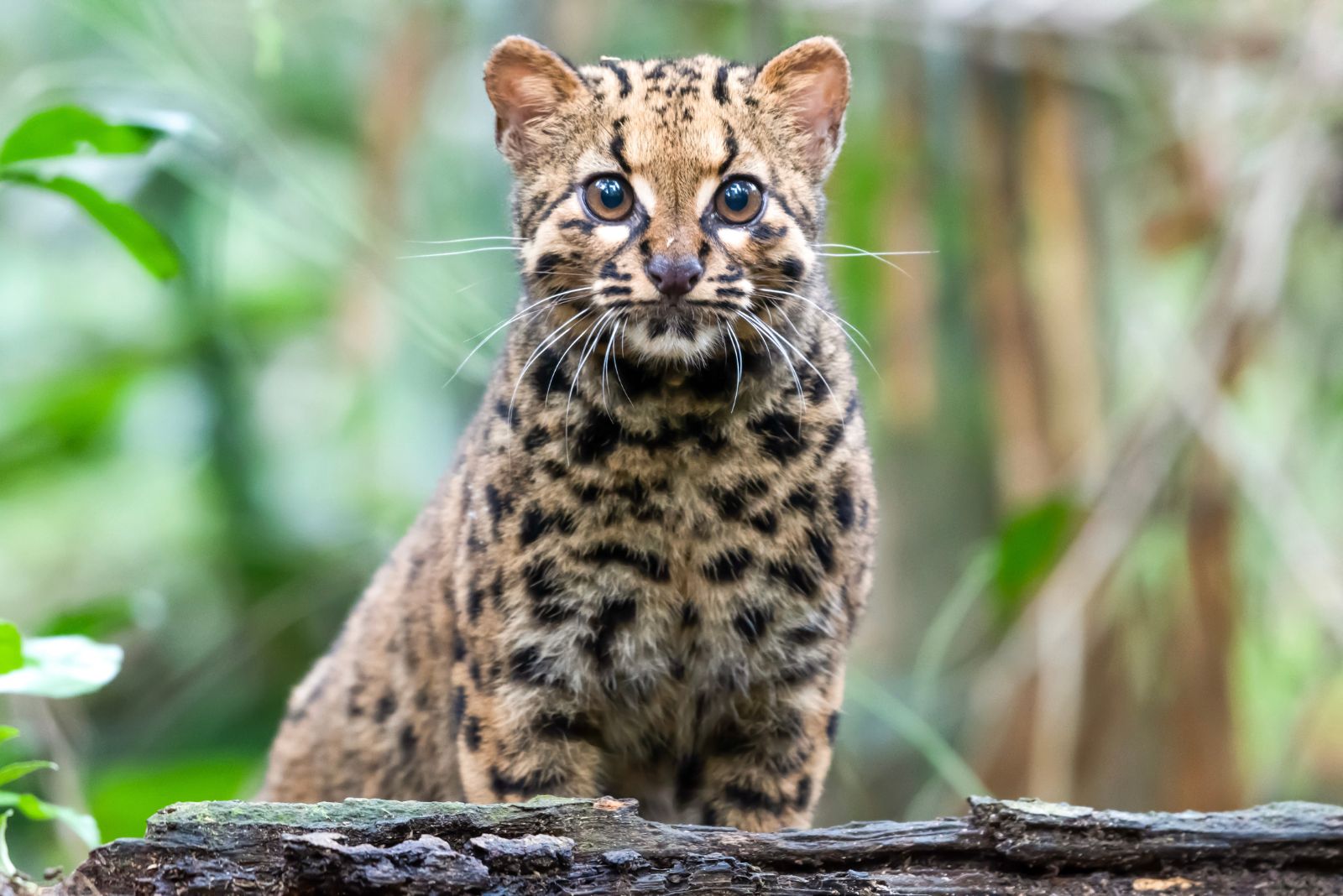
Credit: Shutterstock
The marbled cat is a small wild cat found in the forests of South and Southeast Asia. It is a rare and elusive species that is known for its distinctive coat pattern and tufted ears.
Marbled cats are nocturnal and solitary climbers that hunt small mammals, birds, and reptiles. They are adapted to living in forested environments and are skilled climbers.
The marbled cat is listed as Vulnerable by the International Union for Conservation of Nature (IUCN) due to habitat loss and degradation.
27. Puma
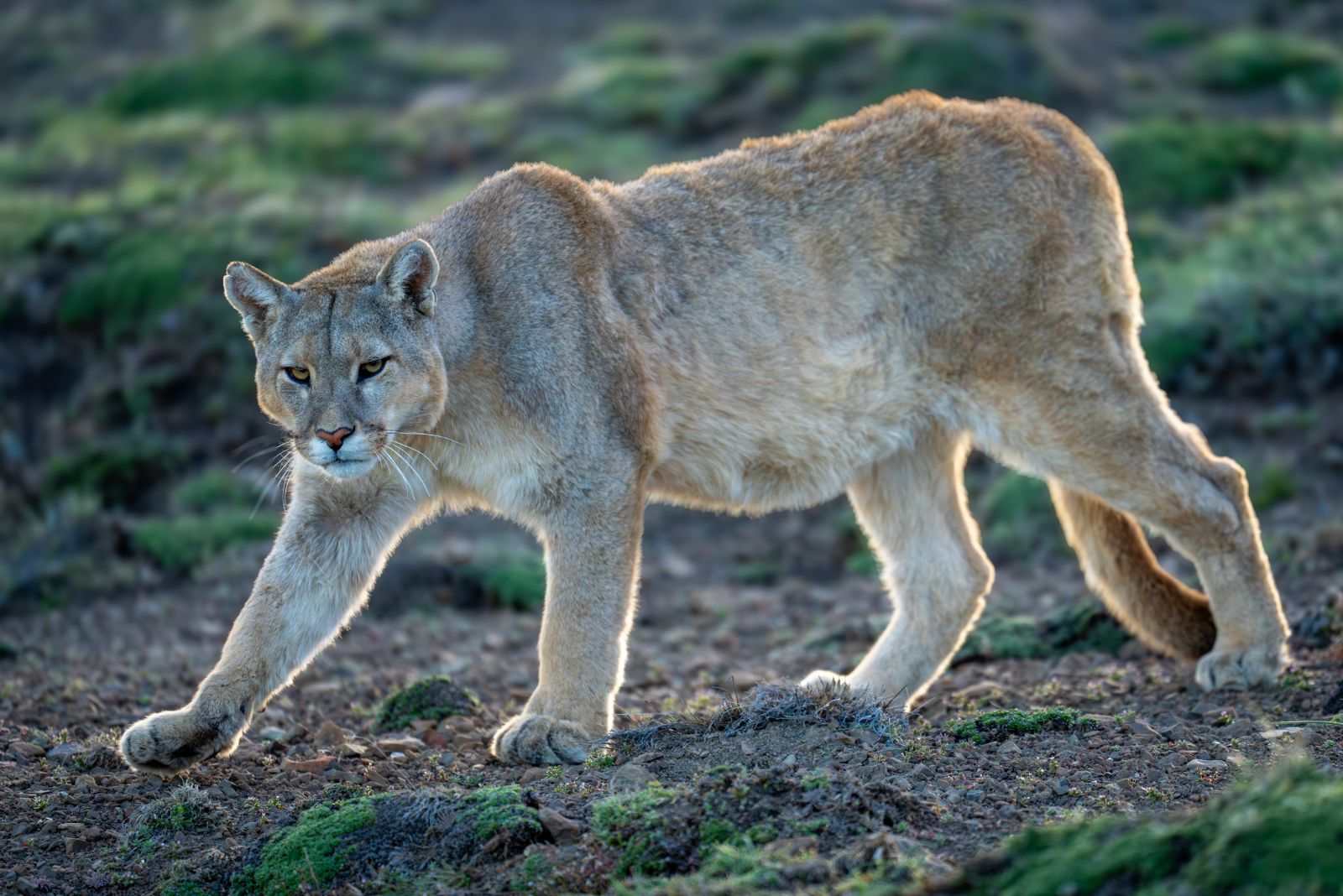
Credit: Shutterstock
The puma is a large cat found in a variety of habitats across North and South America. It is also known as the mountain lion, cougar, and panther and is the second heaviest cat in the Americas after the jaguar.
Pumas are adaptable and solitary animals that are known for their powerful bodies, strong legs, and distinctive coat pattern. They are carnivorous and hunt a variety of prey, including deer, elk, and other small mammals.
Pumas are skilled climbers and are able to jump up to 20 feet (6 meters) in the air to catch prey.
28. Bobcat
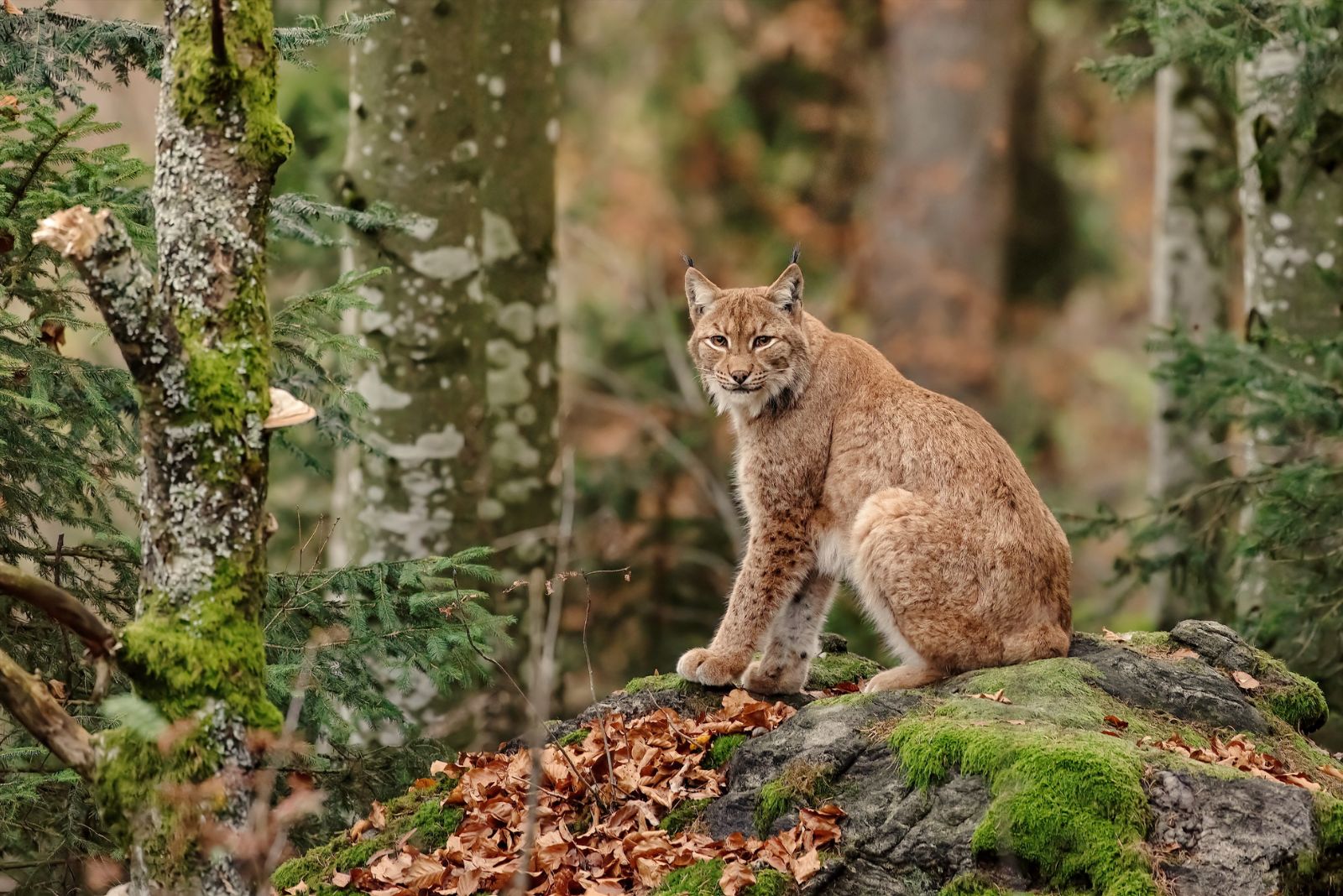
Credit: Shutterstock
The bobcat is a medium-sized wild cat breed similar to the Canada Lynx found in a variety of habitats across North America, from southern Canada to Central Mexico.
It is a solitary and nocturnal animal that is adapted to living in a variety of environments.
Bobcats are carnivorous and hunt a variety of prey, including rabbits, hares, and small mammals. They are skilled climbers and are able to swim and dive in search of prey.
The bobcat is not considered threatened and is widely distributed across its range. It is protected by law in some areas but is also hunted for its fur in others.
29. Lion
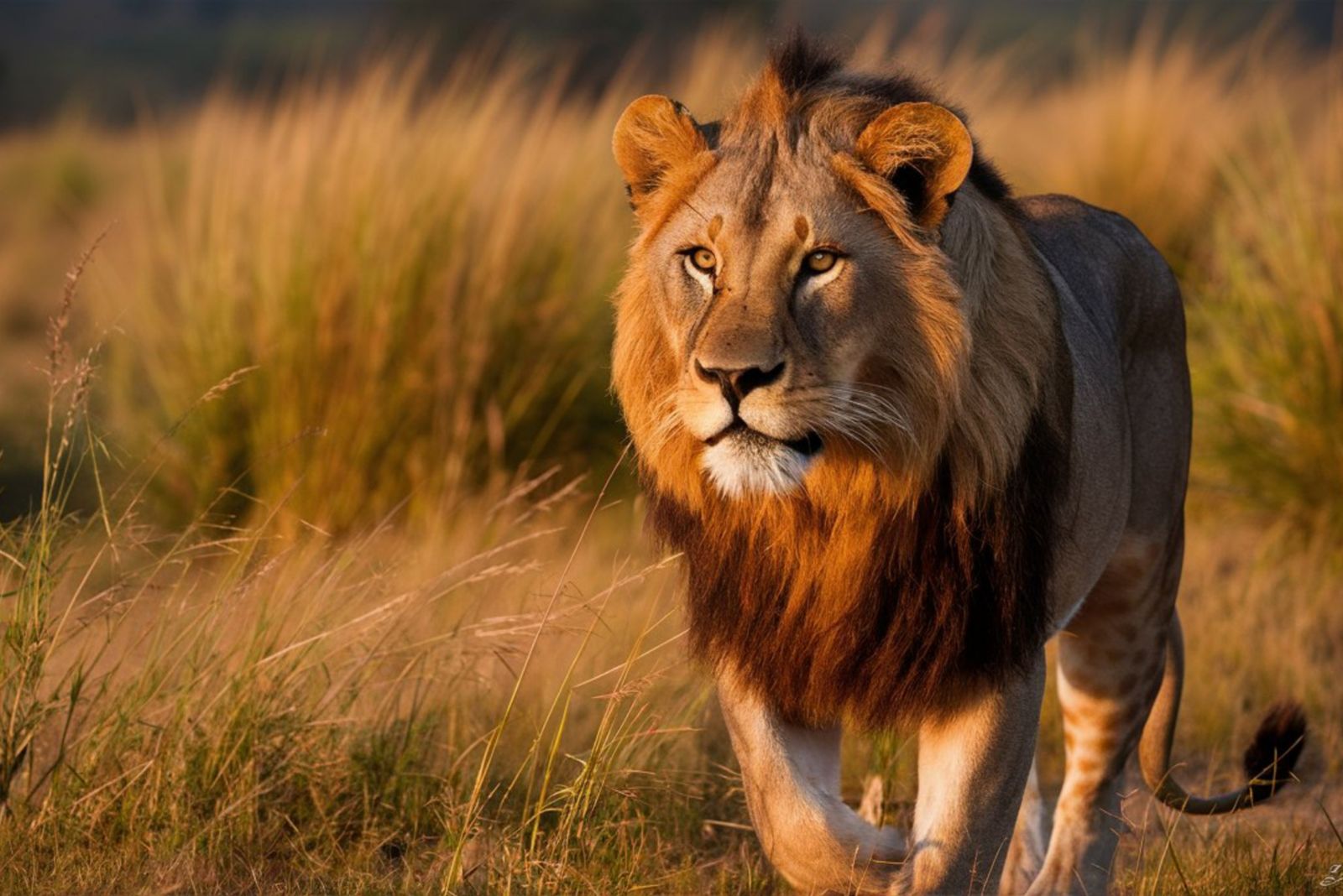
Credit: Shutterstock
The lion is a large cat species found in the grasslands and savannas of Africa.
It is the largest cat species and is known for its mane, powerful body, and social behavior. Lions are carnivorous and hunt a variety of prey, including antelopes, zebras, and other large mammals.
They are social animals and live in groups called pride, which are led by a dominant male. Lions are not considered threatened, but their populations have declined due to habitat loss and conflict with humans.
The lion is protected by law in many countries, but it is still hunted illegally for its skin, bones, and other body parts.
30. Tiger
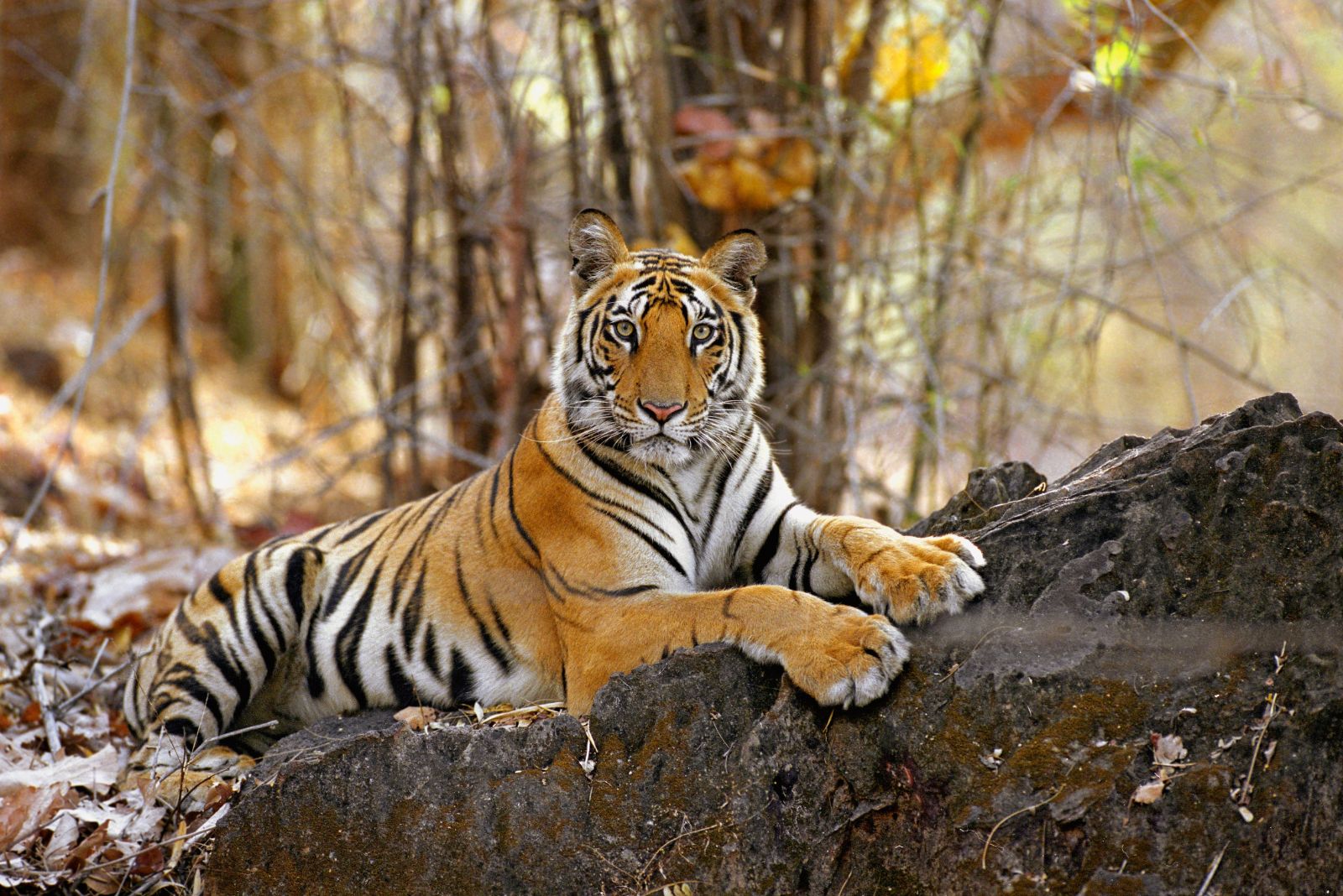
Credit: Shutterstock
The tiger is the largest wild cat breed found in a variety of habitats across Asia, including forests, grasslands, and swamps.
It is the largest cat species in Asia and is known for its distinctive orange and black coat, powerful body, and long tail. Tigers are carnivorous and hunt a variety of prey, including deer, wild boar, and other large mammals. They are solitary animals and defend large territories against other tigers.
Tigers are endangered, and their populations have declined dramatically due to habitat loss, poaching, and conflict with humans. There are several subspecies of tigers, including the Bengal tiger, Siberian tiger, Sumatran tiger, and South China tiger.
31. Leopard
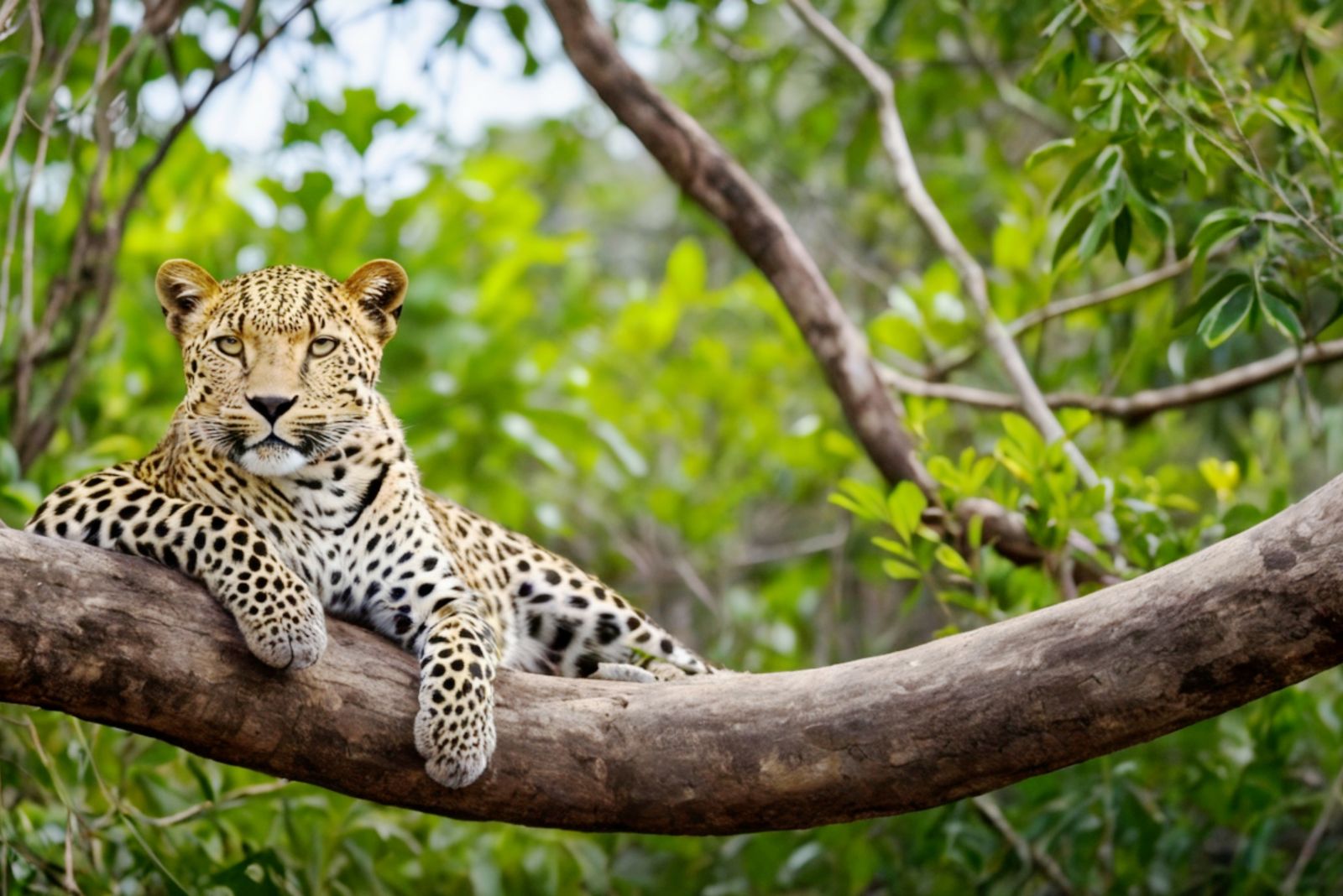
Credit: Shutterstock
The leopard is a medium to large cat species found in a variety of habitats across Africa and Asia.
It is known for its distinctive coat pattern, which is made up of circular spots called rosettes. Leopards are carnivorous and hunt a variety of prey, including antelopes, rodents, and other small mammals.
They are solitary animals and defend large territories against other leopards. Leopards are adaptable and are able to survive in a variety of environments, including forests, grasslands, and mountains.
They are skilled climbers and are able to carry heavy prey up into trees to avoid competition with other predators. Leopards are not considered threatened, but their populations have declined in some areas due to habitat loss and conflict with humans.
32. Snow Leopard
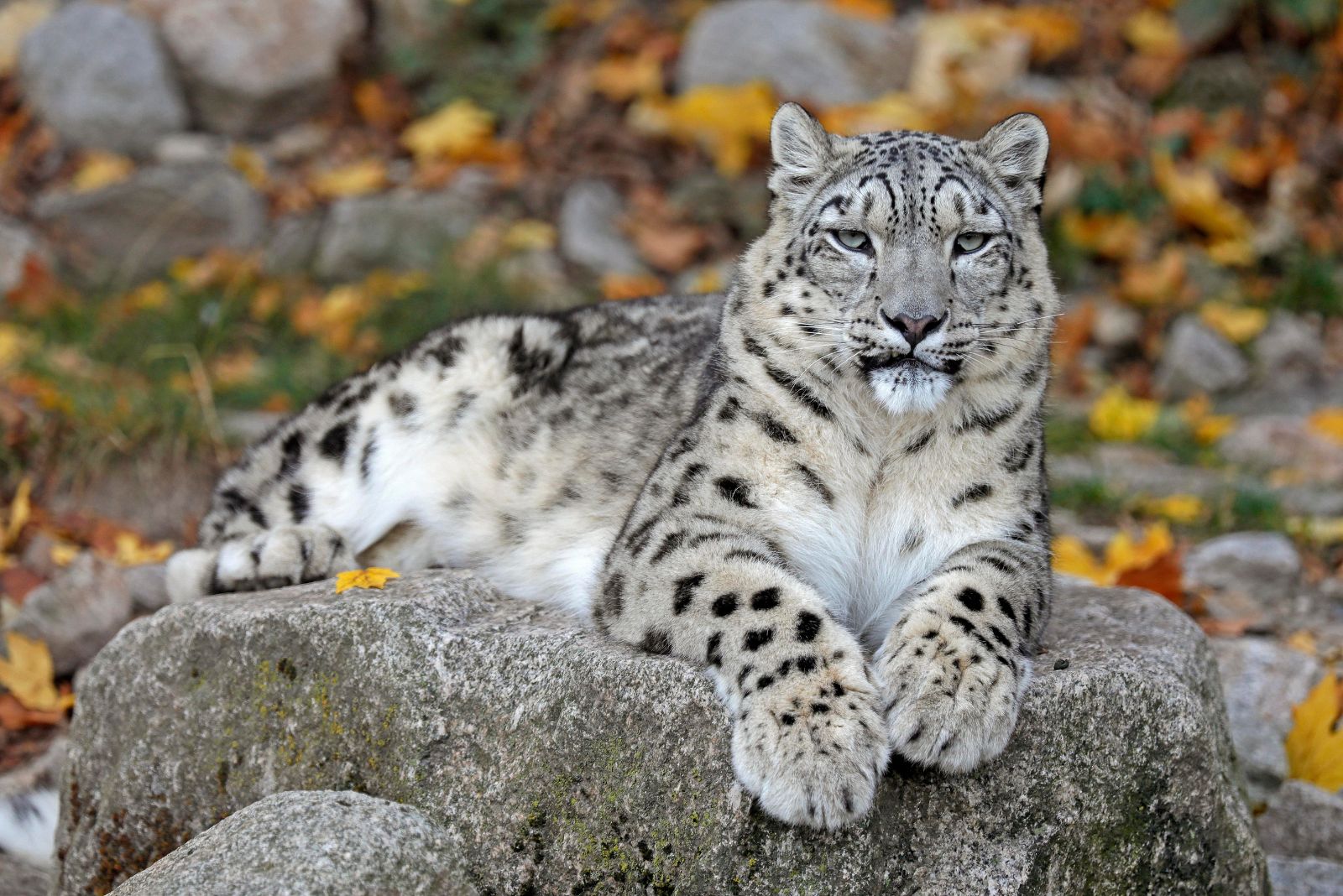
Credit: Shutterstock
The snow leopard (the Ghost of the mountains) is a large cat species found in the mountains of central and south Asia, Nepal, and India.
It is adapted to living in cold, snowy environments and is an excellent climber. Snow leopards are carnivorous and hunt a variety of prey, including ibex, blue sheep, and other small mammals.
They are solitary animals and defend large territories against other snow leopards. Snow leopards are endangered, and their populations have declined due to habitat loss, poaching, and conflict with humans.
They are protected by law in many countries, but poaching for their fur and other body parts is still a significant threat. Snow leopards are also threatened by climate change, as the melting of glaciers and snowfields reduces their habitat.
33. Jaguar
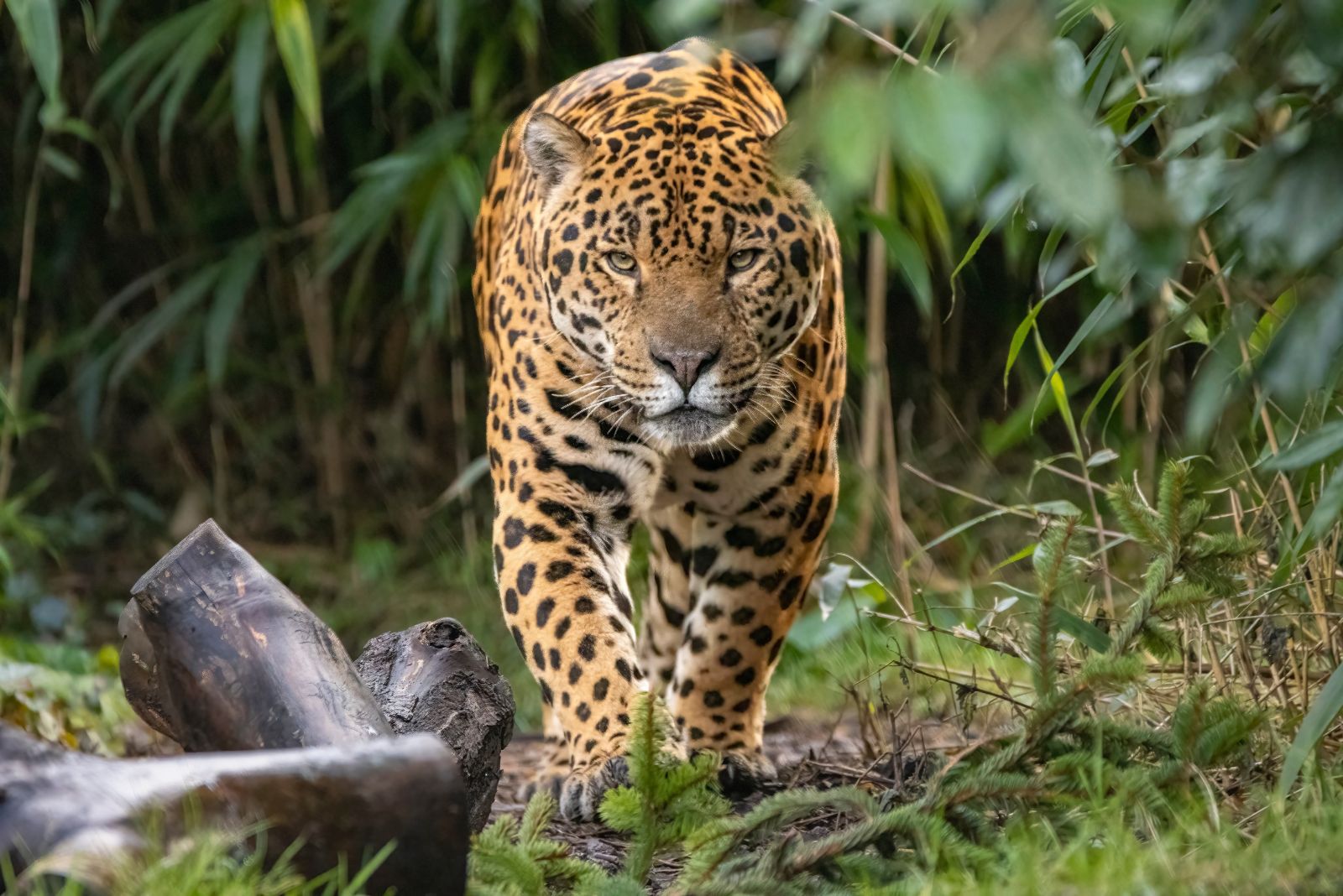
Credit: Shutterstock
The jaguar is a big cat species found in the forests, grasslands, and swamps of Central and South America.
It is the largest cat species in the Americas and is known for its powerful body, strong jaw muscles, and distinctive coat pattern, which is made up of large, circular spots. Jaguars are carnivorous and hunt a variety of prey, including deer, wild pigs, and reptiles.
Jaguars are skilled swimmers and climbers and are able to kill prey much larger than themselves. They are not considered threatened, but their populations have declined in some areas due to habitat loss and conflict with humans.
They are protected by law in many countries but are still hunted illegally for their skin, bones, and other body parts. There are no subspecies of jaguars.
34. Borneo Bay Cat
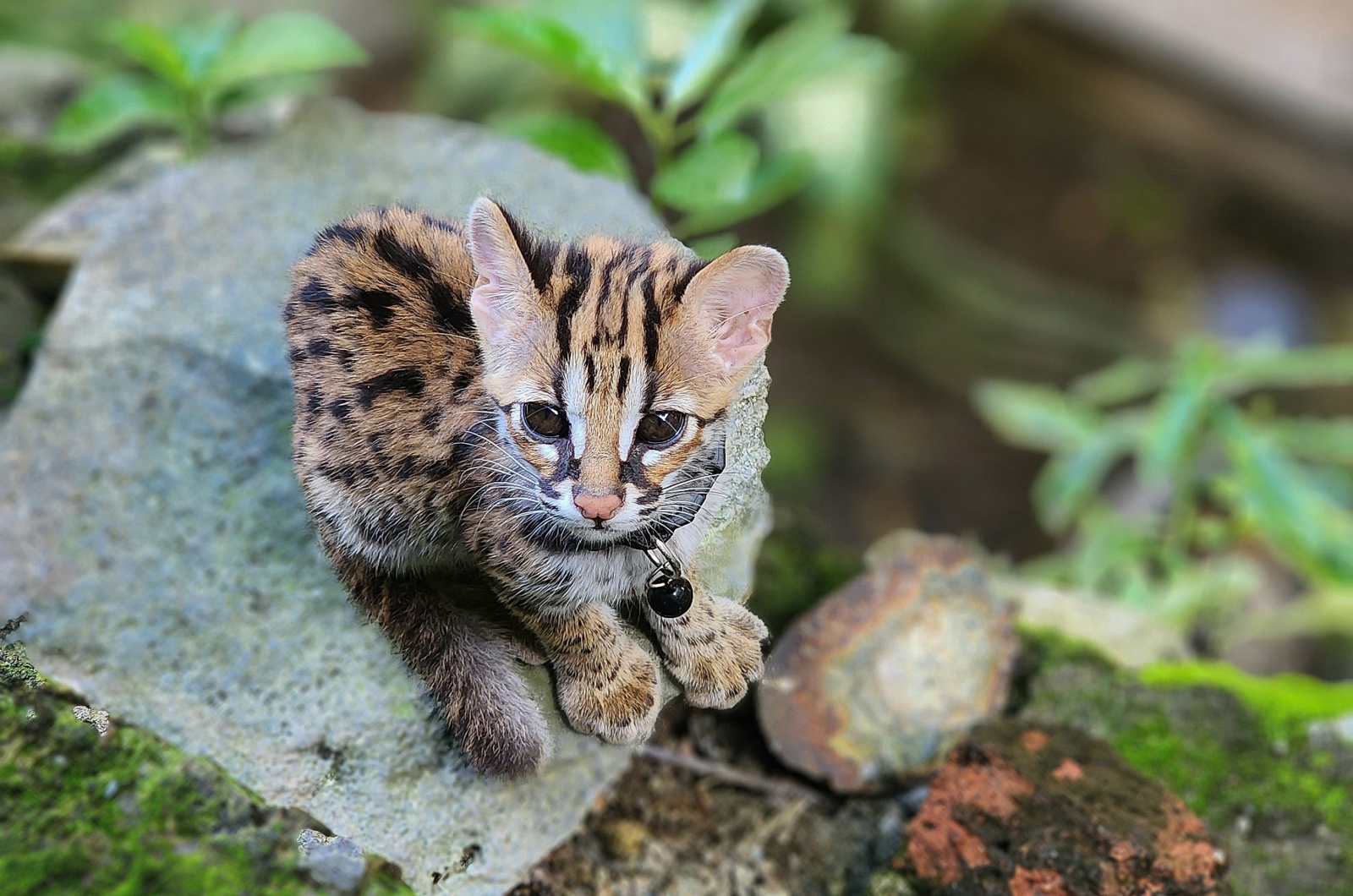
Credit: Shutterstock
The Borneo bay cat, also known as the Bornean marbled cat, is a small wild cat found in the forests of Borneo.
It is a rare and elusive species that is known for its distinctive coat pattern and tufted ears. Borneo bay cats are nocturnal and solitary animals that hunt small mammals, birds, and reptiles.
They are adapted to living in forested environments and are skilled climbers. The Borneo bay cat is listed as Critically Endangered by the International Union for Conservation of Nature (IUCN) due to habitat loss and degradation, as well as hunting and trapping.
35. Clouded Leopard
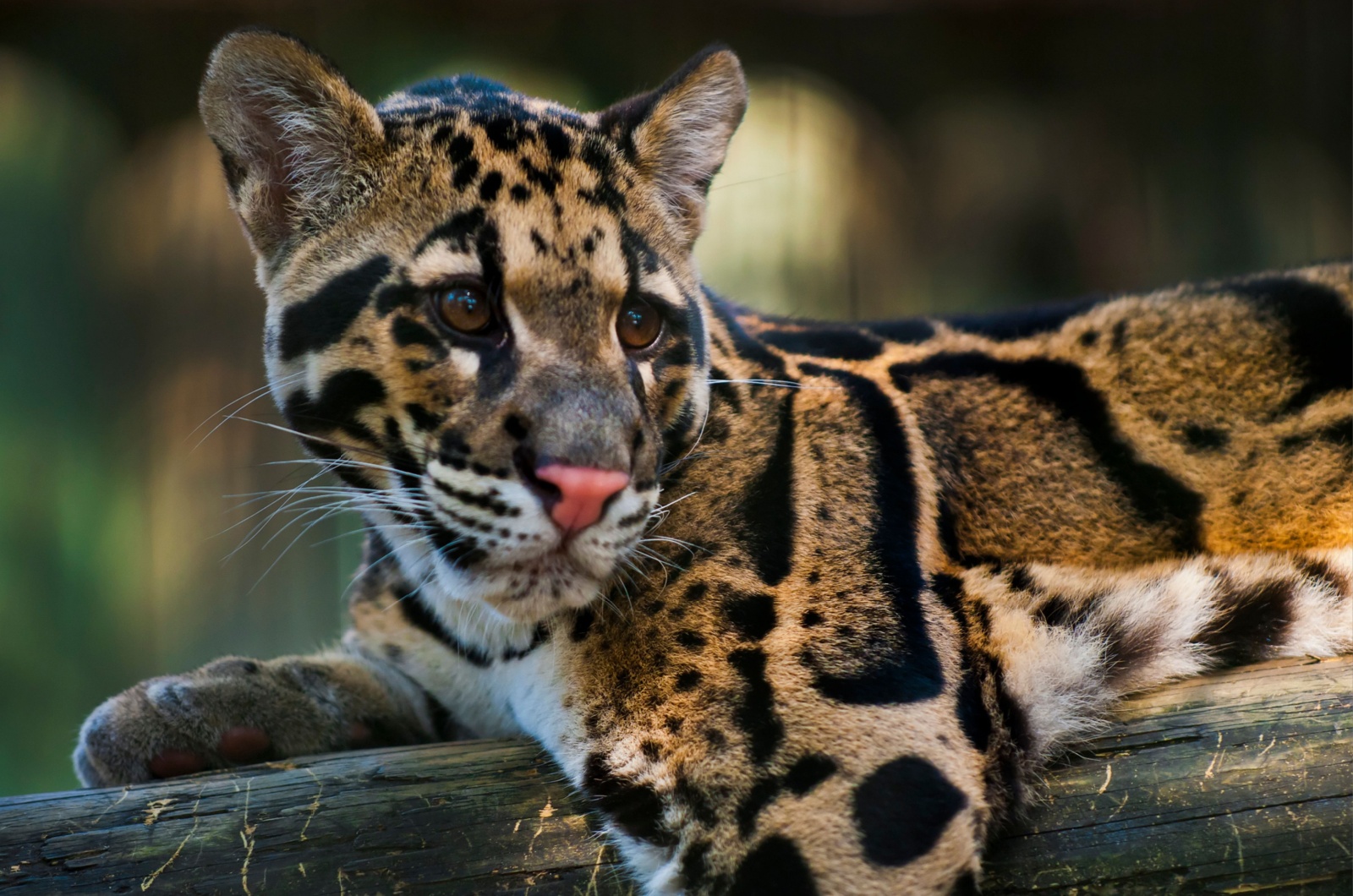
Credit: Shutterstock
The Clouded Leopard is a stunning and mysterious big cat native to the forests of Southeast Asia, known for its distinctive cloud-like markings that cover its body.
With a sleek, muscular build and large, round eyes, the Clouded Leopard is a graceful and powerful predator, capable of climbing trees with remarkable agility, often hunting from the canopy.
This medium-sized cat is solitary by nature and primarily nocturnal, preying on small to medium-sized animals such as deer, birds, and monkeys. The Clouded Leopard is known for its exceptional ability to stalk and ambush prey, using its keen sense of sight and stealth to surprise unsuspecting animals.
Despite its beauty and incredible abilities, the Clouded Leopard is a vulnerable species, facing threats from habitat destruction and poaching for its distinctive fur. Its elusive nature and striking appearance make it one of the most captivating and endangered wild cats in the world.
36. Asiatic Golden Cat
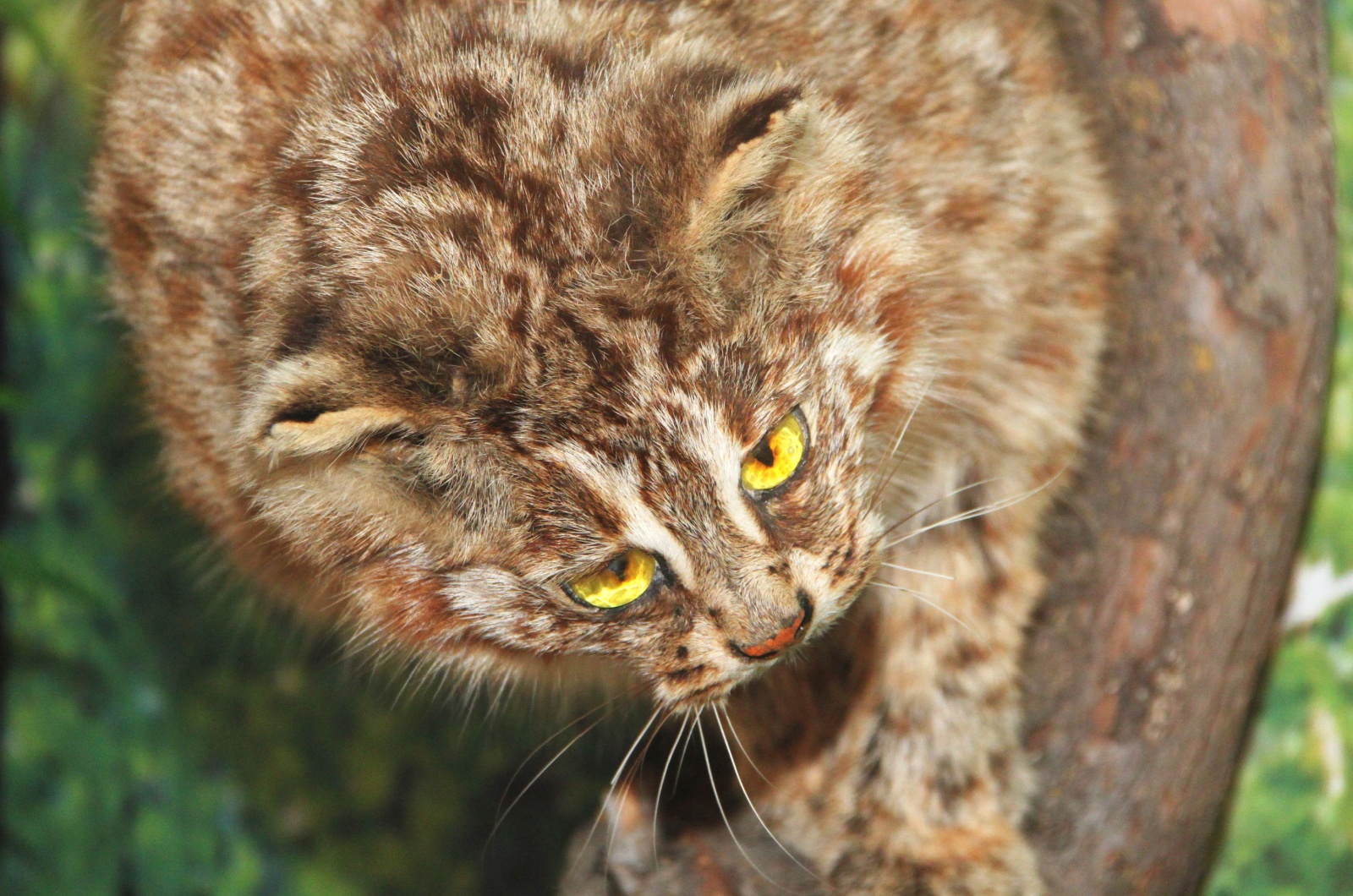
Credit: Shutterstock
The Asiatic golden cat is a medium-sized wild cat, a great climber, found in the forests of South and Southeast Asia. It is a solitary and nocturnal animal that is adapted to living in a variety of habitats.
37. Sunda Clouded Leopard
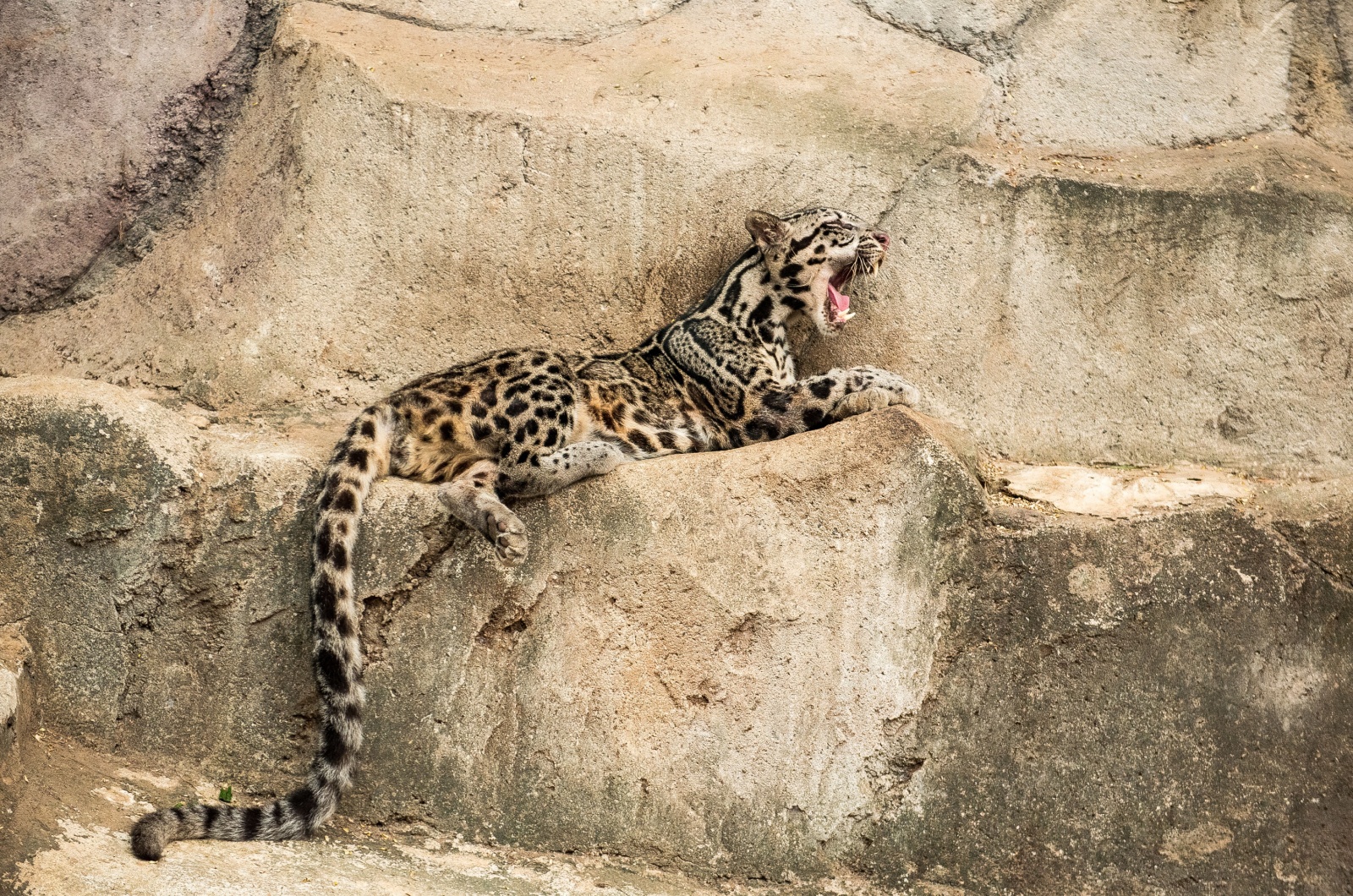
Credit: Shutterstock
The Sunda clouded leopard is a medium-sized wild cat breed found in the forests of Borneo and Sumatra. It is a rare and elusive species that is known for its gorgeous coat pattern and tufted ears.
Sunda clouded leopards are nocturnal and solitary animals that hunt a variety of prey, including small mammals, birds, and reptiles.
They are adapted to living in forested environments and are skilled climbers. The Sunda clouded leopard is listed as Vulnerable by the International Union for Conservation of Nature (IUCN) due to habitat loss and degradation, as well as hunting and trapping. There is still much to learn about the biology and behavior of this little-known and elusive cat.



